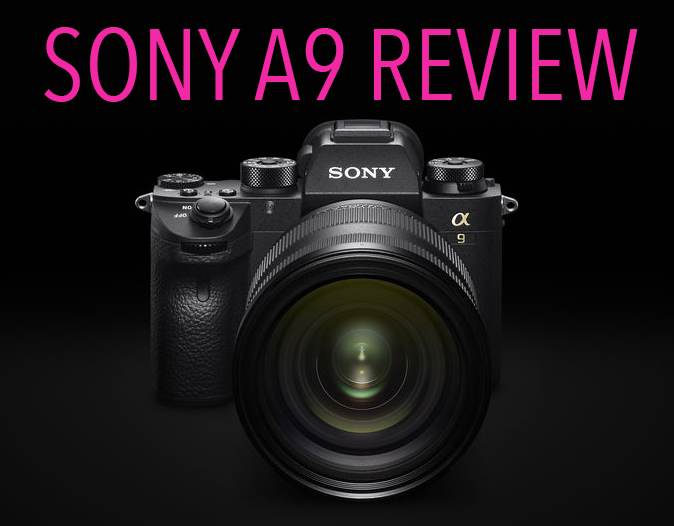
The Sony A9 Camera Review. So much more than an action camera.
By Steve Huff
Click image for larger! The Sony A9 and Voigtlander 50 Heliar f/2.5
The Sony A9 has been highly anticipated and rumored for 2+ years now as the “A9 Pro” yet it is not fully a traditional “PRO” camera like you would expect of a Canon 1Ds or Nikon D5 series. While I feel the A9 can be used by Pros of any type, I will state off the bat that I think Sony dropped the ball in two areas with the A9. Weather Sealing, which should have been done fully AND as a pro spec camera and a $4500 price point by not including S Log for film makers, I feel Sony crippled it a little. At $4500 I would have liked to have had it ALL without anything being omitted (wouldn’t that be nice, a perfect camera that can truly do IT ALL)? For a Sony body, $4500 is very expensive and they are reaching into Leica territory (but without the long valued and much adored history of Leica in imaging) but is it worth the cost? Well, that depends on who you are, what you shoot, what you need and what you want from a camera. I feel even without the pro weather sealing and omission of S LOG, it will be worth it for some of you, again, depending on what you shoot. If you shoot sports, yes. If you shoot weddings as a pro? Yes. If you shoot landscape? I’d say stick with the A7RII. You get the drift…
Fresh BIG Lemons. OOC JPEG, Sony A9 and 24-70 in Vivid Mode – I feel the color has improved with this new 24 MP Stacked Backlit sensor.
When I first used the A9, I wanted it badly. I said I would sell my A7RII and plunk down the cash for the A9, then I said I would keep my A7rII and still buy the A9 as I bonded with my very well used A7RII. Then reality sunk in as I looked over my budget and cash flow. No way I could afford to just buy an A9 outright. So I have held off and cancelled my pre order due to the cost of $4500 and the fact that my A7RII and A6300 are still working just fine for my needs. Even so, I do WANT ONE BADLY and I love the A9’s speed, low light high ISO abilities, EVF, no blackout, dual SD slots, and the beefy battery system which is AMAZING. I just am not sure if I can justify the extra $3k it will cost me if I sell my A7RII. $3000 is a load of cash. I can buy a 24-70 G Master for that and have change to spare (and BTW, the more I use the 24-70 GM, the more I appreciate what it gives me..amazing lens). So for now, I am waiting until I can save up some more disposable cash, and when I do, I will sell my RII and get the A9 as I do enjoy all of the upgrades it offers me over the RII.
The A9 with the lovely 50 0.95 Nocturnus II
Now with that said, I do see IQ improvement with the A9 vs the A7RII. Not in resolution of course, but in color, and the way this new sensor brings forth contrast with that color. I find it more pleasing and a little step away from the usually Sony color signature. In case you are wondering, this is a good thing. The A9 feels as mature as a camera can get when in the hand and in use. Sony has come such a long long way since their 1st mirrorless camera, the NEX-3. Wow. Digital Imaging in general has come a long way since and I feel that today, 2017, we have some of the best camera tech that has ever been available to anyone, ever. The A9 is a huge part of that but also companies like Olympus, Fuji and Panasonic are also helping pave the way.
It’s a beauty and I love the gold a9 lettering on the camera. Gives it a nice polished look.
This review will be like most of my reviews. From the heart, letting you know what I really feel. letting you know if I encountered issues in my real world shooting. Also going over thoughts of video, build, speed, and what I feel are important features that would make it a camera you may want to look into. I will share my real world images instead of test charts and pixel peeping tests that to me, have nothing to do with real world photo taking. It is how my site has been for 9 years now, and I am not changing now, or ever ; )
I also want to take this opportunity to thank ALL OF YOU who visit here, and to Sony for sending me a review unit for the A9 and 24-70 GM. What a combo. Without you guys reading this, this site and its thousands of reviews and articles would cease to exists. Truth be told, the camera review industry has been on a downward slope for many as less and less cameras are being made today and those that are, well, they are more niche and higher end like what we see here. So thank you for coming here, I really appreciate you taking the time to read another opinion on whatever camera you may have interest in.
Sure, the Sony A9 can do action with its blazing continuous tracking AF that sticks to your subject like glue, but it can also do any kind of photography as well. Portraits, Still Life, Low Light, or whatever.
1st two shots, A9 with 16-35 GM f/2.8, third shot with the 50 Nocturnus at f/0.95
The focus tracking is phenomenal. When it locks on to your subject it sticks like glue. Amazing, and I have never seen anything like it.
–
The 16-36 GM 2.8. I need to get a review unit as I had minimal time with one but this is a lens that I feel will be my constant companion on my A7 or A9 (when I get one) as I use these cameras for video almost daily (other projects) and the 16-35 f/4 has been my most used lens for this reason.
–
The 50 Nocturnus. This lens is GORGEOUS and my new fast 50 fave for any system. See my review here, and follow up here.
First things First…the Specs
Sony blew many of us away when they announced the specs of this camera. Truth be told, the A9 does things NO OTHER camera can do as of the day I am writing the at the end of May/start of June 2017. For starters, the no blackout EVF is amazing in real use. Forget all you think you know about EVF’s. This one is like looking at a HDTV, and when you fire away shots, if using the electronic shutter you can do so without any blackout whatsoever. Shoot at a high frame rate and it just looks like s solid image though the EVF. NO BLACKOUT at all. NO SOUND, as you can make it 100% silent as well. So for stealthy situations, wow. Imagine if all news shooters used this camera. You know, when you watch the news on TV and hear a million shutter clicks going off? If everyone had an A9, you would hear NONE of that! How nice would that be. C’Mon Nikon and Canon, better get on with your REAL mirrorless camera soon. If not, Sony is here to take the lead.
The features that make the A9 much better than the A7 series for me are these:
- No blackout EVF
- Amazing fast and accurate AF – Tracking is stunning. Af Speed is remarkable.
- Larger battery and longer life. MUCH needed and welcomed.
- DUAL SD slots, finally.
- More refined build and design and grip.
- New dial up top to control things such as frame rate and focus modes. No more menu diving for these settings.
Click the image for larger and better version. This is with the A9 and the 50 Nocturnus at f/0.95. You can see my review of this lens HERE.
But let’s take a look at the complete list of features for the A9:
- 24.2MP Full-Frame Exmor RS Stacked CMOS Sensor
- Poised for speed, the a9 features a first-for-full-frame 24.2MP Exmor RS stacked CMOS that affords impressively quick readout speeds to benefit up to 20 fps continuous shooting and UHD 4K video recording. The sensor’s back-illuminated design also affords high sensitivity to an extended ISO 204,800 with reduced noise for clean image quality in a variety of lighting conditions. Additionally, uncompressed raw files can be recorded in 14-bit for greater color fidelity and post-production flexibility.
(Steve’s Take: While the sensor here is built for speed it also has what I feel is the best resolution…the sweet spot so to speak. 24 Megapixels for me is perfect. The right blend for speed, high ISO, etc. 14 Bit RAW capable, this sensor has fantastic color possibilities)
- BIONZ X Image Processor
- Working in conjunction with the stacked CMOS sensor is an apt BIONZ X image processor that ensures quick processing speeds to keep up with fast-paced shooting applications. Continuous shooting up to 20 fps is supported for up to 362 consecutive JPEGs, or 241 raw frames, along with a top electronic shutter speed of 1/32,000 for freezing fast-moving subjects or working in bright lighting conditions. Benefitting the fast recording capabilities is an equally quick AF/AE metering system that functions at 60 times per second to continuously evaluate the scene in order to lock onto and track moving subjects. Additionally, due to the use of an electronic shutter, totally blackout-free monitoring is possible with the electronic viewfinder for more accurate compositions of moving subjects.
(Steve’s Take: If. you need or want speed, ever, this camera has you covered. The new BIONZ X take the A9 to the stratosphere with insane speed capabilities like no other camera ever created. Now, I rarely ever need speed like this but in the event I do, I would be covered)
A9 WITH THE SONY 28 F/2
- 693-Point Phase-Detection AF
- Covering 93% of the image area, a focal-plane phase-detection autofocus system incorporates 693 points along with 25 contrast-detection areas for quick and precise focusing in in a variety of lighting conditions with sensitivity down to -3 EV. The density of focusing points from this hybrid AF system also enables High-density Tracking AF Technology, which is adept at tracking moving subjects in a variety of lighting conditions. The use of phase-detection points also enables the use of A-mount lenses via the optional LA-EA3 or LA-EA1 lens mount adapters with full continuous AF/AE tracking compatibility.
The apt focus system also lends itself to a variety of focusing functions for refined accuracy, including Lock-on AF, which maintains focus on moving subjects throughout the use of a configurable frame that is set over the desired moving subject, and Expand Flexible Spot, which employs neighboring focus points to retain focus on moving subjects even if the originally selected point loses focus. Additionally, Eye AF can be used to base focus on recognized subjects’ eyes for portraits and is available in both AF-S and AF-C modes. Autofocus can also be used in conjunction with the Focus Magnifier function for critical focus when homing in on minute subject details.
In addition to autofocus, the a9 also features a Peaking MF function to benefit manual focus control by highlighting sharp edges of contrast for a more objective means of acquiring sharp focus.
(Steve’s Take: The focus here is blazing wether using single point, eye AF or tracking. No complaints at all here)
My thoughts after I first shot the A9
- 5-Axis SteadyShot INSIDE Image Stabilization
- Packed into the robust a9 is a 5-stop effective 5-axis SteadyShot INSIDE image stabilization system that compensates for five different types of camera shake encountered during handheld shooting of stills and video. This allows users to confidently use any lens, even adapted lenses, for critical imaging without encountering blur from camera shake.
For long focal lengths, the system will correct for pitch and yaw adjustments. Macro and high-magnification imagery, on the other hand, will benefit from the inclusion of horizontal and vertical shift compensation. All shooting styles will get usage out of the roll compensation. All 5 axes of stabilization will function at all times, even when used with third-party lenses and adapters or lenses with built-in optical stabilization.
(Steve’s Take: No one can do 5 Axis like Olympus with their EM1 MKII or even EM5 MKII but the Sony here does pretty well with it. Shoot video with a wide angle and you will get steady cam like performance.)
A9 with the Voigtlander 50 3.5 Heliar – See that lens HERE.
- UHD 4K Video Recording in XAVC S Format
- Internal recording of UHD 4K movies is possible in multiple frame rates up to 30 fps and, based on the Super35mm recording area and effective 20MP (6000 x 3376) resolution, 2.4x oversampling renders greater detail and full pixel readout is possible, that is void of pixel binning, for higher quality imagery with reduced moiré and aliasing. Full HD 1080p recording is also supported in frame rates up to 120 fps, and both resolutions utilize the 100 Mbps XAVC S format contained within an MP4 wrapper with 4:2:0 sampling. The high-speed, 120 fps recording also enables 4x and 5x slow-motion movie recording with the frame rate set to either 30p or 24p. In addition to high-resolution internal recording, uncompressed HDMI output also enables the use of an optional external recorder for clean 4K recording with 4:2:2 sampling.
4K video recording also avails the ability to produce 8MP stills during playback by taking a frame grab from a movie and storing it as a separate file.
(Steve’s Take: While I am not a 4K die hard just yet, many love having 4K video capabilities but Sony, why no picture profiles? No S Log? Why?. You dropped the ball here even though yes, S Log is used by film makers…but this could have been an amazing film makers camera if it has S Log)
First time shooting sports for me and it was with an A9!
- Slow & Quick Motion
- Take more control over your video capture capabilities with a variety of new frame rates available in an S&Q mode. This will allow shooters to capture Full HD video at one of either steps between 1-120 fps. These settings will allow you to slow down action as well as speed up a slow-moving scene. This setting is also NTSC/PAL switchable.
(Steve’s Take: Nice to see a new dial up top for controls and the Q&S added to the main dial. This is cool as you can have your fast or slow motion, on tap, ready to go at a thumb wheel spin)
- Enhanced Zebra Function
- An enhanced Zebra function is ideally suited to aid in monitoring exposure values in high-contrast scenes. Video signal level targets can be set from 0 to 109, and specific ranges can be set to make exposure level adjustments easier.
- Time Code and User Bit Settings
- A time code can be used to record hours, minutes, seconds, frames on image data for more precise editing while the User Bit function can record date, time, and scene number to aid in editing together footage from multiple cameras.
- Body Design
-
- Quad-VGA OLED Tru-Finder features a 3.686m-dot resolution and a 0.78x magnification for bright and clear viewing. The EVF also sports a Zeiss T* anti-reflective coating to reduce reflections and a high 120 fps refresh rate can be used to reduce lag for a smoother viewing experience. Additionally, a fluorine coating has been applied to the outermost viewfinder element to benefit cleaning.
- Rear 3.0″ 1.44m-dot tilting touchscreen LCD is available for live view shooting and menu navigation. The touchscreen enables Touch Focus for intuitive adjustment of your focus point, and the tilting design benefits working from both high and low angles.
- Dual SD card slots provide a more flexible means for storing files. The lower card slot supports UHS-II type cards, and the slots can be configured to do an in-camera backup, segregated raw/JPEG recording, or overflow saving.
- My Menu function can be used to customize your menu items for easy, direct access with up to 72 options to be set and ordered.
- Stacked drive mode and focus mode dials, a dedicated AF-ON button, and a rear multi-selector all afford greater efficiency when switching focus modes, points, or exposure settings.
- Integrated LAN terminal enables making wired FTP transfers for notably fast transfer speeds. Also, the first three characters of the file name can be customized for easier organization during post-production.
- Built-in Wi-Fi enables the a9 to instantly share imagery to mobile devices for direct sharing online to social networking, via email, and to cloud storage sites. NFC (Near Field Communication) is also supported, which allows for one-touch connection between the camera and compatible mobile devices; no complex set-up is required. Once connected, the linked mobile device can also display a live view image on its screen and remotely control the camera’s shutter.
- Bluetooth connectivity allows for location data acquisition.
- Magnesium-alloy body design is both lightweight and durable, and also weather-sealed for use in trying environmental conditions.
- Integrated PC sync terminal for wired flash sync with strobe packs or wireless radio remotes.
An out of camera JPEG with the A9 and 50 Nocturnus II
So with specs that should please almost anyone, the Sony A9 is the SONY FLAGSHIP camera. This is their highest end, most capable, most versatile full frame beast that can do whatever you need it to do, and then some and Sony says it is the best camera they have ever made, period. I agree.
While shooting with it, I marveled at the big bright EVF when using manual focus lenses like the Nocturnus II. When using lenses like the 24-70 G Master, I was impressed with the speed of the Auto Focus, and it’s ability to lock on quickly even in low or almost no light. I was very impressed by the high ISO results as well, and shot a slew of images at ISO 51,200.
The two images below were shot at ISO 51,200 with Noise Reduction in camera set to LOW. These are right from camera JPEGS, and both were taken in near dark situations even though you can not tell this from the photos. Sometimes a great sensor and lens can “lighten up the scene” by sucking every but of available light in. This camera does it with ease.
The Sony A9 passes my low light tests, and for me, is up there with the A7S series for high ISO capability.
BUT HOW DOES IT DO AGAINST THE A7RII AT HIGH ISO?
Here is an ISO test between this and the A7rII. The A9 wins with a nice cleaner image, and even better out of camera contrast. These are all OOC JPEGs with NR set to LOW, and same settings on each camera. Exactly. ISO 25K, so pretty extreme ISO. In my (dusty) kitchen, light source is from a door behind the (video) camera left. These are full size files so click them to see them full size.
–
And a crazy low light shot that was taken in DARKNESS. The Af Assist light was used to obtain AF and 1/13s at ISO 102,400 will tell you it was DARK. This is amazing to me as it keeps color, and the noise is not nearly as bad as I thought it would be. I remember when ISO 640 looked like this on the Leica M8 ; )
More LOW light Images…
Mostly ISO 51,200
So Let Me See….10 Reasons why I feel this is the most versatile and advanced camera in the world as of June 2017…
When the A9 was launched Sony did so by putting on a HUGE event for press, and influencers and well respected photographers. They put on a full track and field event to show the speed and tracking capabilities. Somehow this made some think it was only a camera for action freaks, when this could not be further from the truth. The A9 to me is probably the most capable, versatile camera in the world as of May 2017. Let me list off my 10 reasons why that would be:
- It’s gorgeous and IMO just right for portrait work with its 24 MP sensor that puts out nice color and nice contrast out of camera. Even Nikon uses Sony sensors.
- For street the AF is blazing fast, or when using manual lenses the new EVF makes it easy to obtain focus. Clear and like watching an HDTV. No blackout!
- I can use my Leica glass, Nikon glass, Canon glass, and almost any lens via adapters. THIS A9 is better than a Leica M9 in every way, yes, even for Leica glass. It is better than a Canon 5D and Canon or Nikon can not use RF glass.
- Can shoot in any light and to me, it seems better in low light than the A7s. So no light? Not a real problem.
- Even without advanced film making settings like S Log, the video the A9 takes is gorgeous and better than my RII out of camera. No muss or fuss for the average video guy.
- I shot over 1000 frames and still had 70% battery left. This is amazing.
- Nice feel and build quality, controls are all accessible outside of the menu system.
- Dual SD slots so no worry of losing data.
- We now have a pretty nice selection of lenses from cheap to expensive and small to larger. More are on the way as well.
- 5 Axis IS in the camera makes for some steady shots, photo or video.
This would not be a Steve Huff review if one of my Dog’s did not make an appearance. This is just a quick snapshot of which I have taken many a time. But this is an OOC JPEG, ISO 1600 and look at the color, the contrast and overall look. To me, this is much nicer than Sony cameras of the past. The AWB did perfectly here. I mean PERFECT. Click it for larger. Of course the lens helps, and it was the 24-70 f/2.8 G Master, which is astonishing.
So it should be no secret that I really really like the Sony A9. The A7rII and entire A7 version II series was really a home run for Sony. The A9 takes it up several notches in all areas, and unfortunately for us, the price as well. I know many of you are there, scratching your head asking yourself “Is $4500 worth it for this camera”? I mean, I am doing it too. If this were $2999 it would have been like a runaway train, selling non stop, and wiping out all other full frame cameras in sales (my guess, and opinion) but at $4500 it is still a tough sell as today, for pros to switch from C or N would require a whole new lens reboot as well, and $4500 for a body, and probably $10-$15k for lenses is not an easy investment to make for 90% of us. For those who already shoot Sony, the A9 is a no brainer if you currently love your A7 or even A6000 series camera. IT IS INDEED a much better imaging machine than what has come before it even if it looks similar.
For me, the difference in shooting the A9 vs the A7RII comes with speed, maturity in feel and use, better output in all areas, and using it is a JOY due to the beautiful EVF design and no blackout. These are the things that MAKE a camera that can be LOVED and ADORED. When you have fun using your camera you also are more motivated to use it. You become a person who WANTS to get out and shoot. When you love the tools you work with then your work can and does excel. When you use a tool you are just “meh” about, your work can suffer. I see it happen all the time. I know when I own and use a camera I love, the motivation it gives me to get out off my ass and shoot and enjoy life is well worth the investment. I used to always get that from Leica M’s, or the Leica SL or even the Sony RX1, etc.
The A9 is also in that category as it will never hold you back, never keep you from getting the shot you need, and in my tests, I have yet to see any issues or faults.
ISO 100 BANDING?
Some have reported seeing banding at ISO 100 with the A9. I think it came from one reviewer. When I heard of this, I tested my A9 to see if I could replicate it, so I shot ISO 100 with the mechanical shutter, and the electronic shutter at ISO 100 LOOKING for ANY banding. I just could not find it. Anywhere. So for me, and real world use (using a camera how it was designed to be used) I have had ZERO issues. No hang ups, no SD card errors, no slow start ups and nothing keeping me from shooting. But below are the ISO 100 shots where I can see no banding. Maybe YOU can, me, my eyes are not seeing it.
The 1st image is a full size image from the camera using the Voigtander 50 f/2.5 Heliar which is a gorgeous lens! RAW processed in C1.
–
Another with the Voigtlander Heliar 50 3.5 – MECH SHUTTER
–
Voigtlander 50 3.5 Heliar, ELECTRONIC SHUTTER
–
Sony 24-70 GM – ISO 100 – MECH SHUTTER
–
Sony 24-70 GM ISO 100
So for me, no banding can be seen under any situation, even ISO 102k.
WHO IS THIS CAMERA FOR?
This camera is for anyone who values photography and shoots either for a living, or for passion of life and making memories. It is in no way just for action shooters. It is capable of so much more, and I will say that I think this is the most well balanced camera available today. Is it the best built? No. Is it the largest pro body? No. But that is not the point. It is smaller than a Canon 1d series but more capable. It is nit as well made as that Canon when you feel it, at least mentally, yet it is built well enough. The mount is solid, the body feels fantastic and the speed and response is beautiful. If you shoot portraits, this is a wonderful machine. If you shoot street, this is fantastic. If you shoot still life, this can do the job. Shoot Leica or rare glass? This is the body that can do it for you. There is nothing this camera can not do, which leads me into wondering what Sony or even ANY other company can do to beat it. I am not sure they can.
But the $4500 price point keeps it away from most armatures and some enthusiasts as well. It’s a steep price to pay but as I try to convince myself of its worth, I am thinking of the times that my A7RII did not do what I wanted it to do, or my Leica SL or my Olympus EM1 MKII. There have been times when the light was too low (for Leica and Olympus) and. times when my A7RII missed AF or hunted in the lower light scenarios. There have been many times where my A7RII left me without a battery due to sucking down battery life like a bone dry patch of grass. The A9 would never leave me hanging for battery life, never leave me with missed shots due to slow AF and never fail me in low light.
It does everything, and then some, that I would ever need.
A9 with 50 Nocturnus II from Meyer Optik at 0.95
Now, as I said earlier, this is in no way a tech review. You will not see graphs, charts or labs tests here as I have always disliked those kind of reviews, and most jump to the conclusions anyway. So my review is like one big conclusion, and this A9 to me, is the best all around camera as a whole that I have ever used. While not the best in build, in prestige, and while not having the largest EVF or coolest design, it does what it was designed to do. Take photos in any situation you can imagine. The Dynamic Range is as usual. incredible. I do not think I could blow a highlight if I tried, and I remember the early days of digital when this was a huge issue. Not anymore. Also, 24 Megapixels for me is plenty of resolution as I rarely ever print, and when I do the largest is 16X20 and I have 10MP files that print beautifully at that size. So 24MP is my sweet spot for everything, and it just works. While my A7rII has a more serious megapixel count, at times it is overkill. Plus, I like what I see coming out of the A9 for color, and quality of files, more so than my RII.
After writing this piece and using the A9 here I am, 2PM on June 2nd of 2017. Ready to offer my A7RII up for sale so I can take the A9 plunge. Technically, no 35mm full frame format camera beats it for the money, none that I know of anyway. I have a slew of Sony lenses from Sony and 3rd parties and I do know that Sony has committed their full attention to their digital imaging division. I feel this is just the start of what Sony has planned for the next 3 years. I think they have a plan to be #1 in digital imaging, and with the A9 they just took a giant leap to getting to that goal.
Anyone who “poo poos” the A9 has an agenda, or a loyalty to one brand that is not Sony. I do not do the ‘Loyalty” thing and when a new camera arrives that is better than what came before it, or in this case, better than anything I have owned for digital 35mm full frame format, then I will say so. I love Leica, I love Olympus and I love Sony but the A9 is the best of the breed for the most versatile digital camera I have ever experienced.
The TWO Weaknesses
The ONLY weakness for me is that at this price point, and the fact that this camera includes EVERYTHING you can imagine, Sony did leave out two things. S Log for film makers and a fully pro weather seal like Canon does with their pro line. They also need some long primes but those will be coming. Mark my words. Other than those two things, I have found nothing wrong with the A9. No bugs, no flaws, no banding, no real weakness.
Shoot ACTION? Then this is your camera…but it is also your camera for almost anything else you need to shoot.
I do not do hype. I do not lie. I speak my true feelings and sometimes my excitement makes my writing seem extra peppy but that is when you know I love a camera, or a lens or a product. If it excites me, and makes me want to us it then it has done its job well. For me, the Sony A9 is the most advanced camera ever made. It offers speed, low light abilities that are incredible, and everything one could ask for in a camera such as this. After using the A9, I will say that the DSLR has had its time and day, and those days may be coming to a close over the next few years. With tech like this, the DSLR is not needed. So far this gets my pick for Camera of the Year 2017, and I am not alone in saying that..so far..so far.
WHERE TO BUY?
You can order the A9 from my recommended dealers below:
Some Final thoughts, for now…
While I have to send this review unit back in a few days, I really do want an A9, as I feel it would serve me very well, even better than the A7RII has since it launched which is when I acquired mine. The A9, yes you will be mine. Yes, it is everything I could have wanted and while it does not look or feel like a Leica, it performs better than one, for less money. As I said, I have no brand loyalties to any one brand. I use and review what I like and love, and I love the A9.
There is much I left out of this review like the S&F dial on top that allows us to set our slow mo settings and fast settings to have these available on the fly, anytime (for video). I did not go into the sports level detail, as I did that in my 1st post on the A9 HERE. This camera is a SCREAMER for speed. No doubt. I have mentioned the no blackout EVF but that is HUGE. HUGE! Shooting a few frames per second and you have NO NO NO Blackout. Well, at ANY FPS setting. It is amazing. It is silent if you use the electronic shutter.
I plan on getting an A9, and shooting a nice video with it, to share here. I also feel it is a capable video machine and even without S Log as not all of us who shoot video use that profile. As I go on, I will post more thoughts on it and if I have issues, the same thing. I plan on doing some side by sides as well, with a Leica SL and Sony A7SII for low light. So more will come from me with the A9, just as I have had many A7 posts on this website.
Sony is doing great things, amazing things. If I were Canon or Nikon, I would be scared. Even with users of the big C & N trying to knock down the A9, there is nothing here to knock down. It is already being used by pro sports shooters, wedding shooters, fashion shooters and others. If you want a new camera or camera system, and want the most tech advanced camera you can buy today, the Sony A9 is it. For imaging, it doesn’t get much better.
Also, links to items used in this review that I recommend:
Voigtlander 50 Heliar Lens (gorgeous rendering and color)
MY FINAL A9 THOUGHTS!
PLEASE! I NEED YOUR HELP TO KEEP THIS WEBSITE RUNNING, IT IS SO EASY AND FREEE for you to HELP OUT!
Hello to all! For the past 8 years I have been running this website and it has grown to beyond my wildest dreams. Some days this very website has over 200,000 visitors and because of this I need and use superfast dedicated web servers to host the site. Running this site costs quite a bit of cash every single month and on top of that, I work full-time 60+ hours a week on it each and every single day of the week (I receive 100-300 emails a DAY). Because of this, I could use YOUR help to cover my costs for this free information that is provided on a daily basis.
To help out it is simple, and no, I am not asking you for a penny!!
If you ever decide to make a purchase from B&H Photo or Amazon, for ANYTHING, even diapers..you can help me without spending a penny to do so. If you use my links to make your purchase (when you click a link here and it takes you to B&H or Amazon, that is using my links as once there you can buy anything and I will get a teeny small credit) you will in turn be helping this site to keep on going and keep on growing.
Not only do I spend money on fast hosting but I also spend it on cameras to buy to review, lenses to review, bags to review, gas and travel, and a slew of other things. You would be amazed at what it costs me just to maintain this website, in money and time (250 hours a month, and about $3000 per month).
So all I ask is that if you find the free info on this website useful AND you ever need to make a purchase at B&H Photo or Amazon, just use the links below. You can even bookmark the Amazon link (not the B&H) and use it anytime you buy something. It costs you nothing extra but will provide me and this site with a dollar or two to keep on trucking along.
AMAZON LINK (you can bookmark this one)
B&H PHOTO LINK – (not bookmark able) Can also use my search bar on the right side or links within reviews, anytime.
Outside of the USA? Use my worldwide Amazon links HERE!
You can also follow me on Facebook, Twitter, or YouTube. 😉
One other way to help is by donation. If you want to donate to this site, any amount you choose, even $5, you can do so using the paypal link HERE and enter in your donation amount. All donations help to keep this site going and growing!![]() I do not charge any member fees nor do I (nor will I ever) charge for reviews, so your donations go a long way to keeping this site loaded with useful content. If you choose to help out, I thank you from the bottom of my heart.
I do not charge any member fees nor do I (nor will I ever) charge for reviews, so your donations go a long way to keeping this site loaded with useful content. If you choose to help out, I thank you from the bottom of my heart.

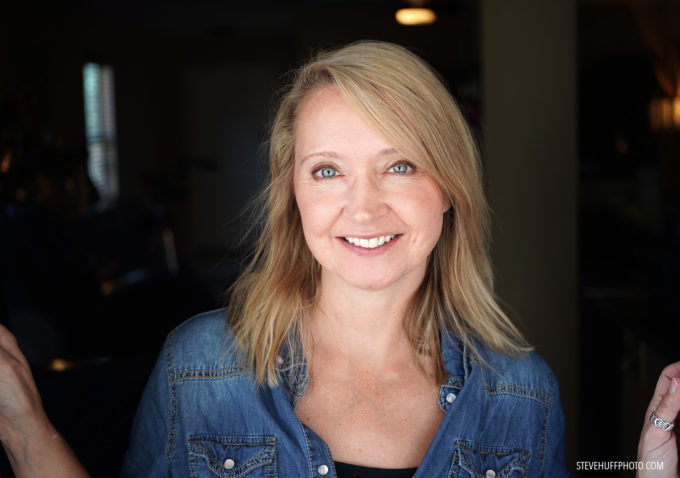
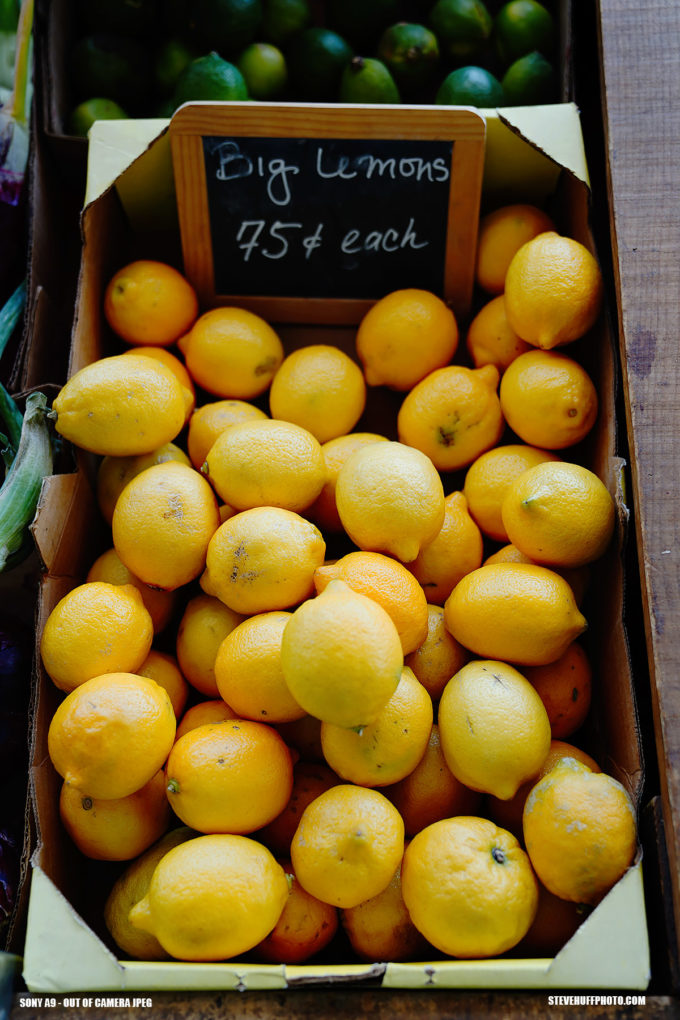
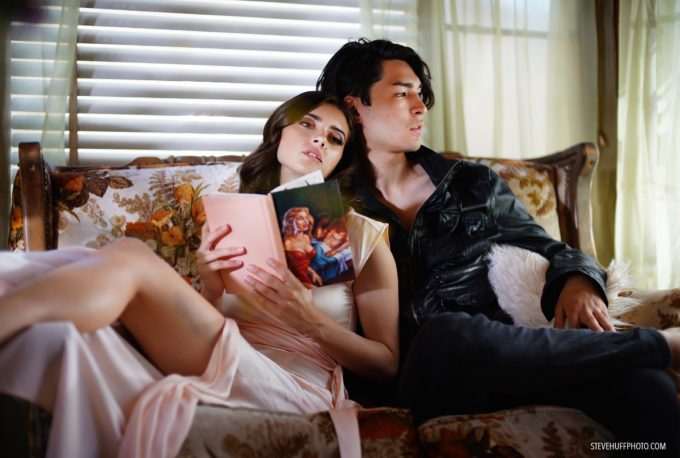

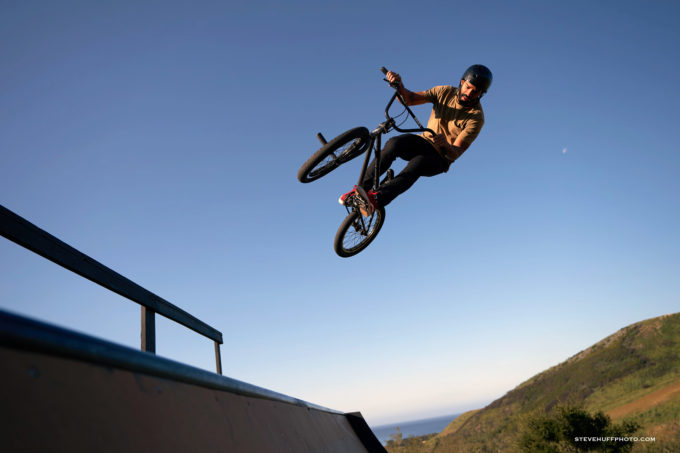
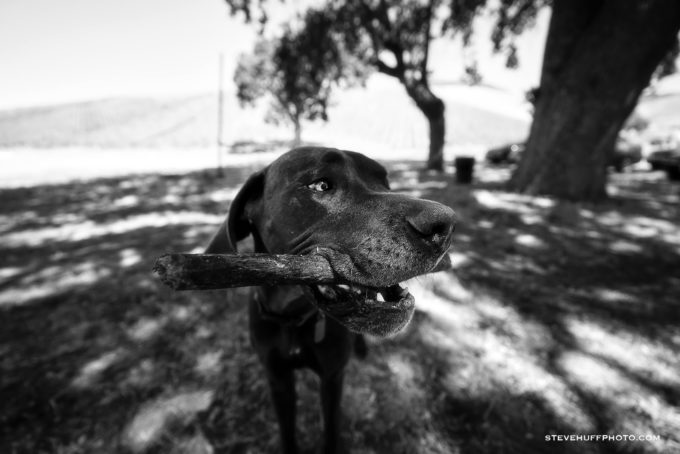
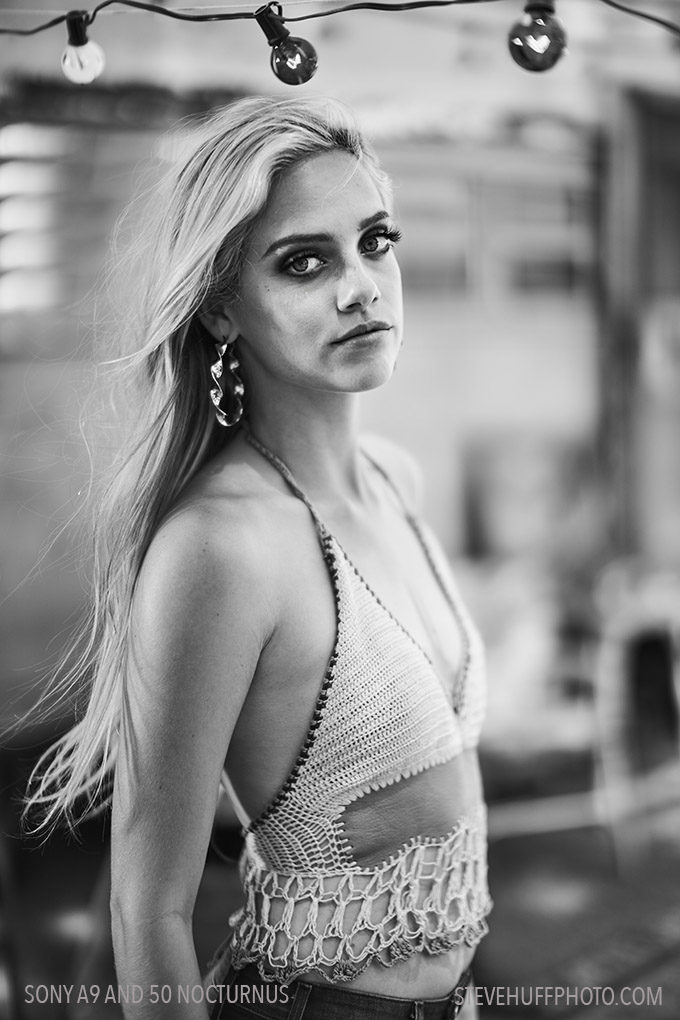
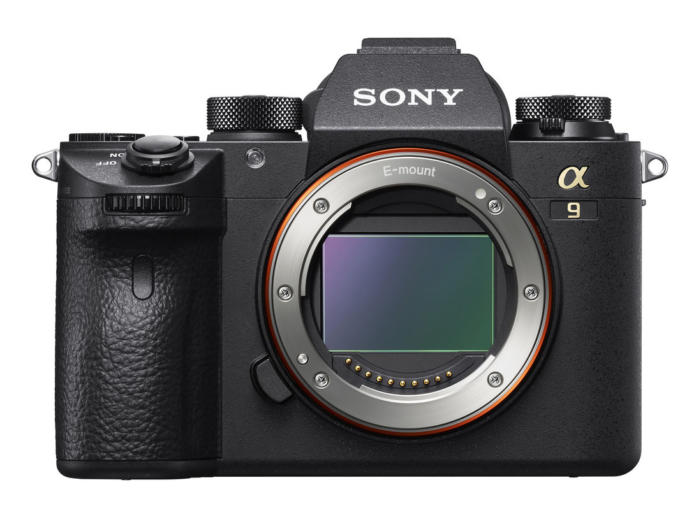
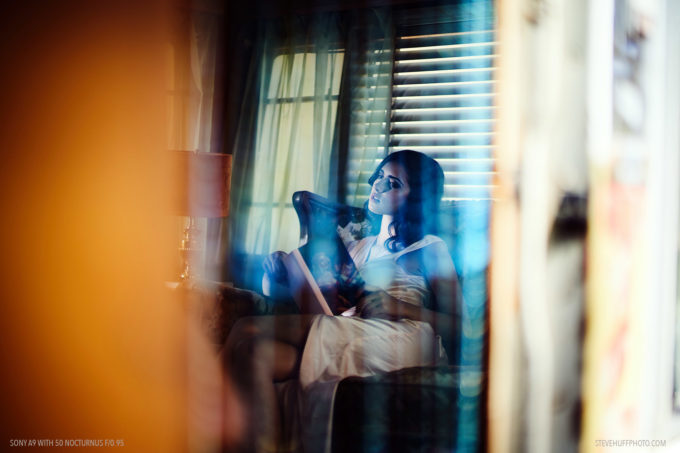
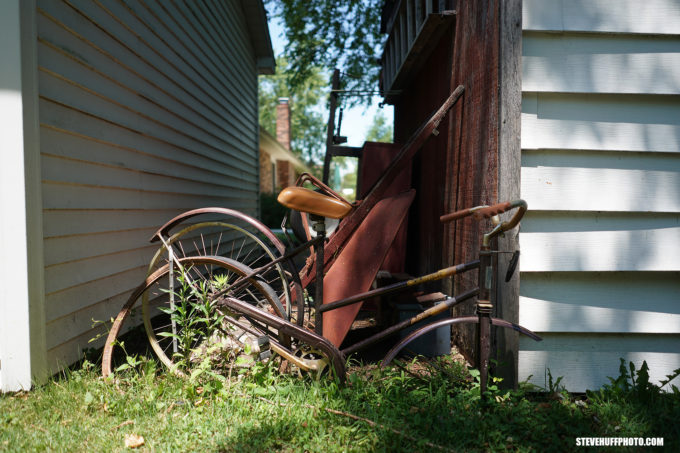

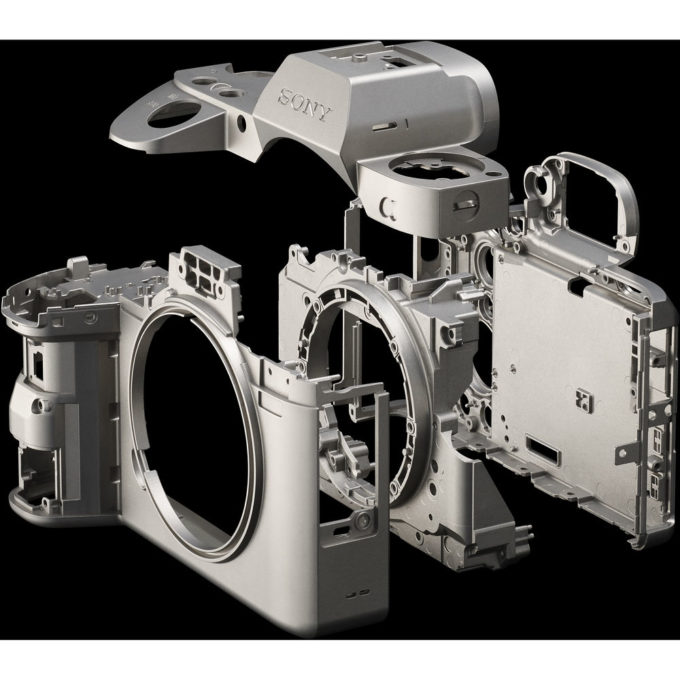


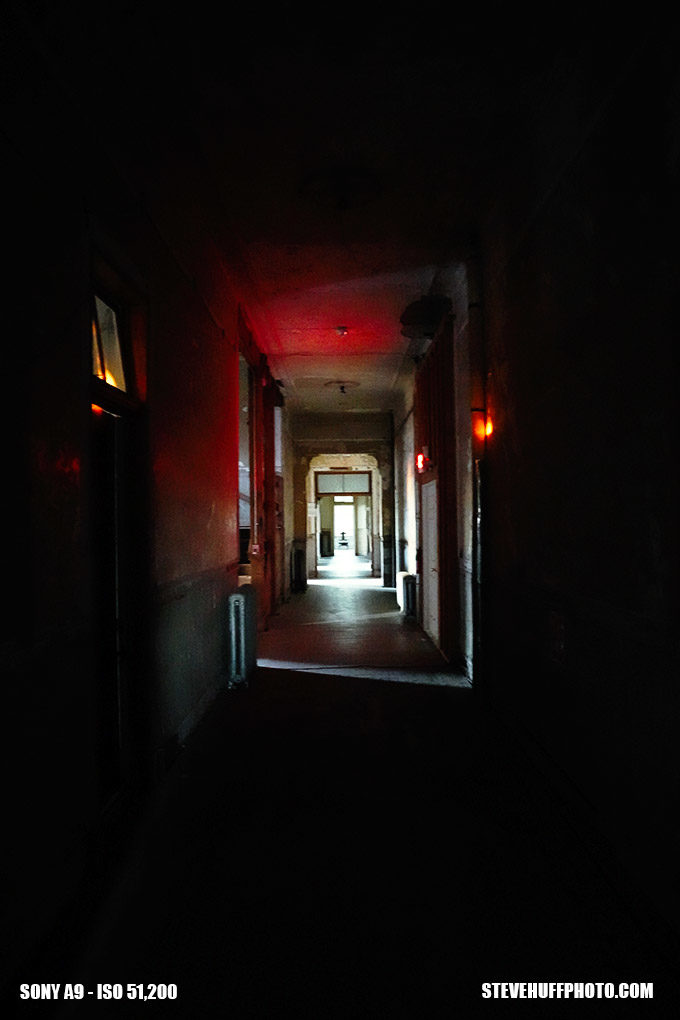
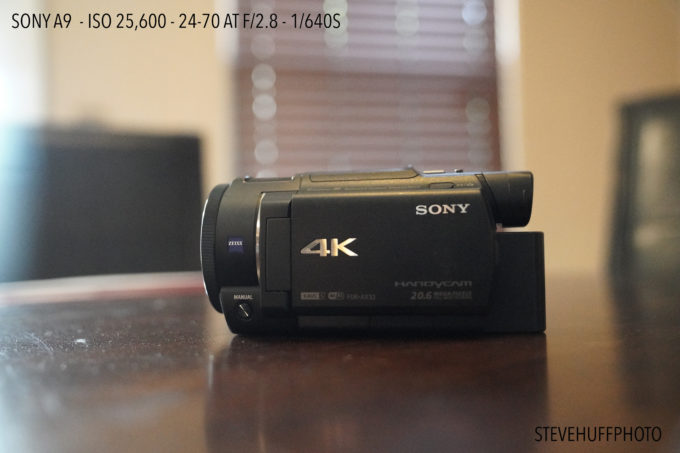
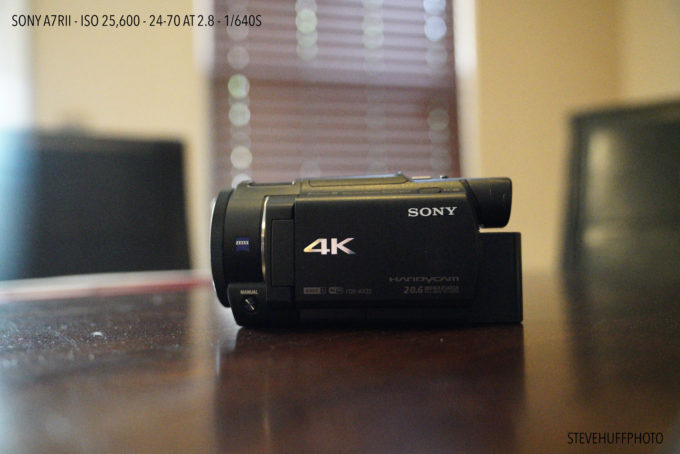
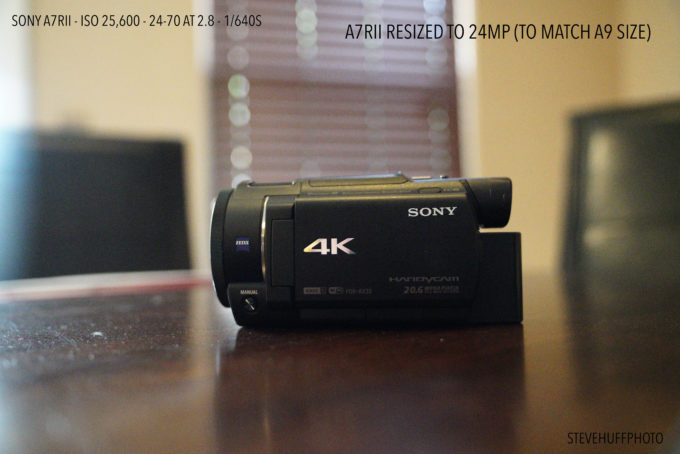
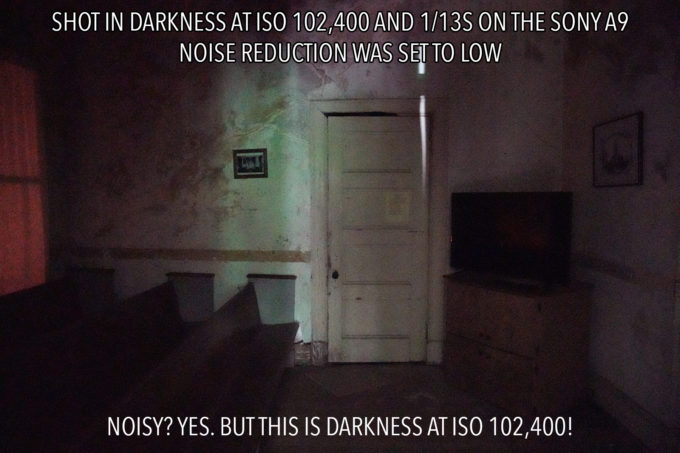
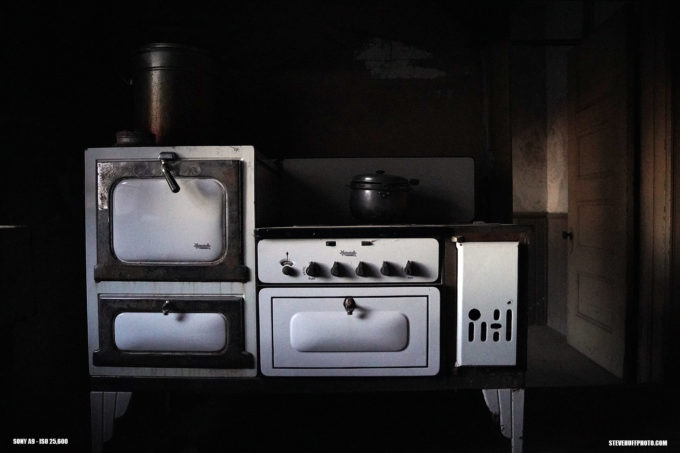
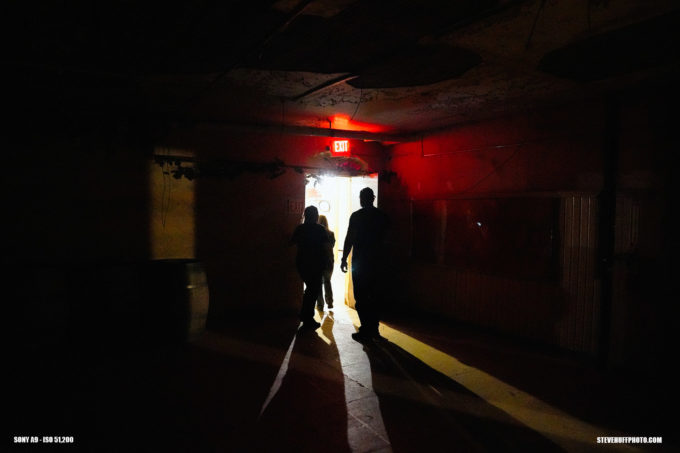
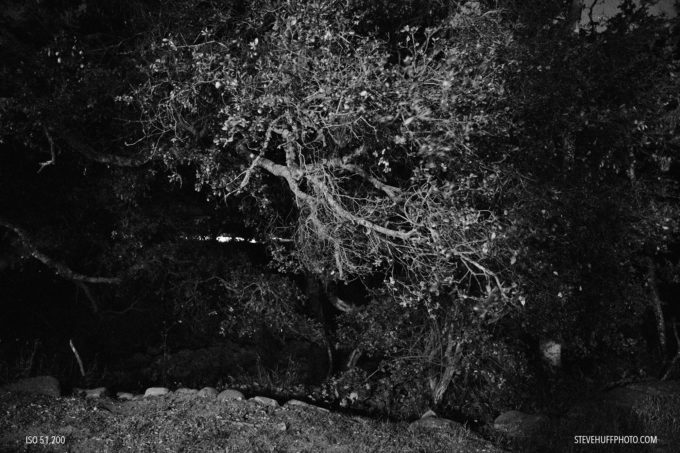
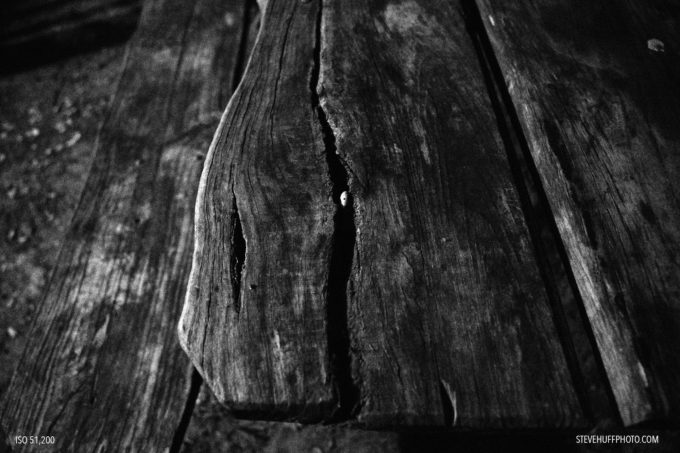
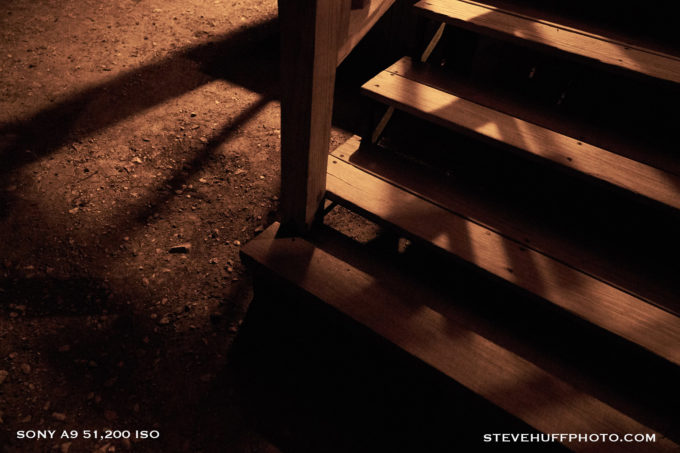
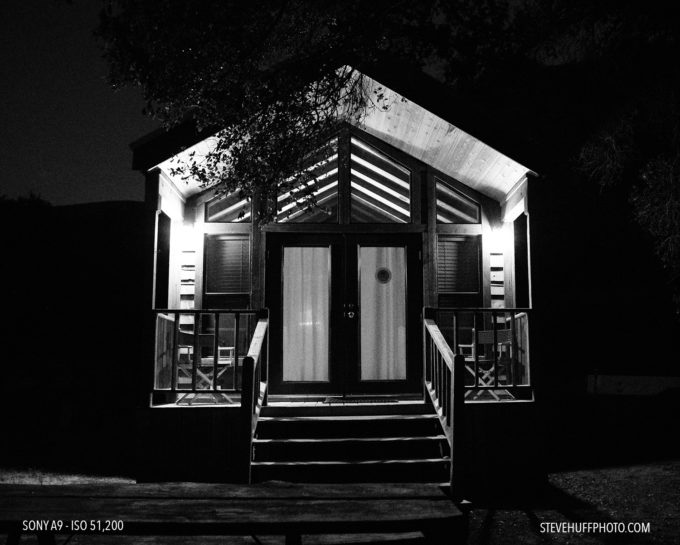
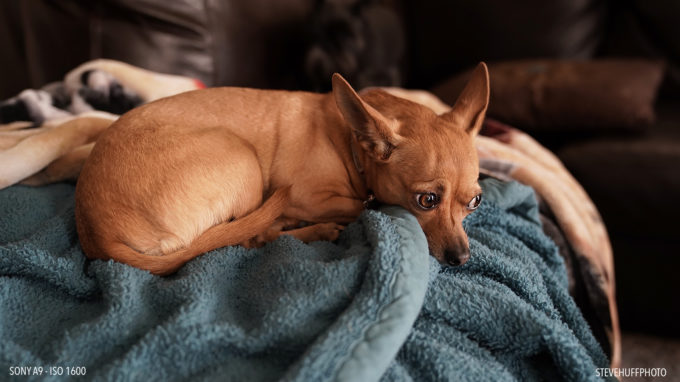
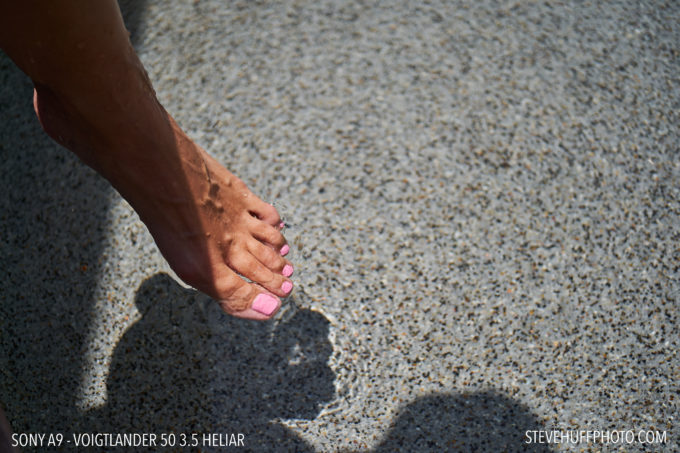
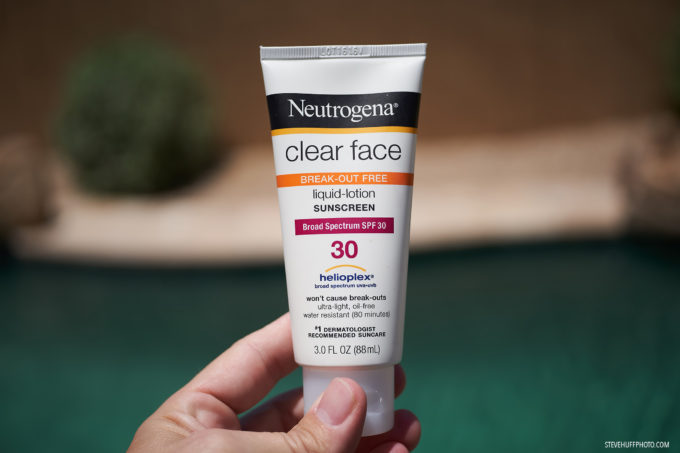
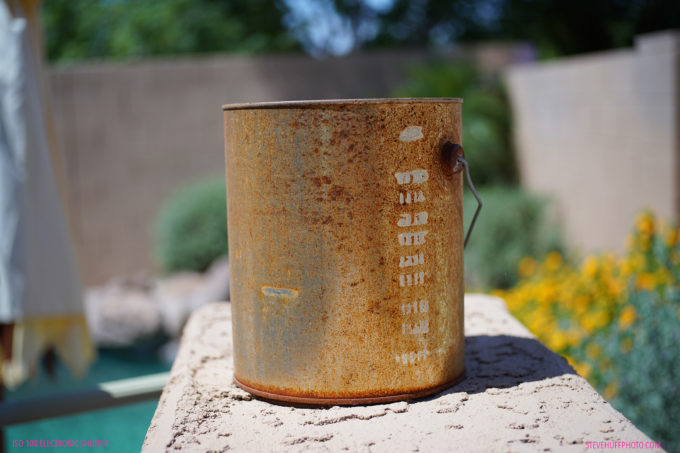
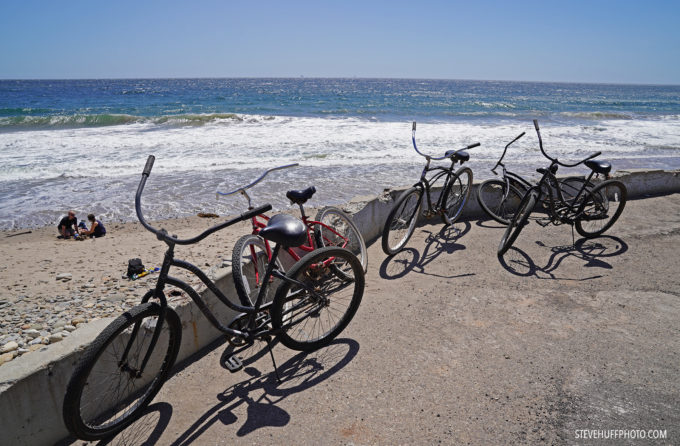
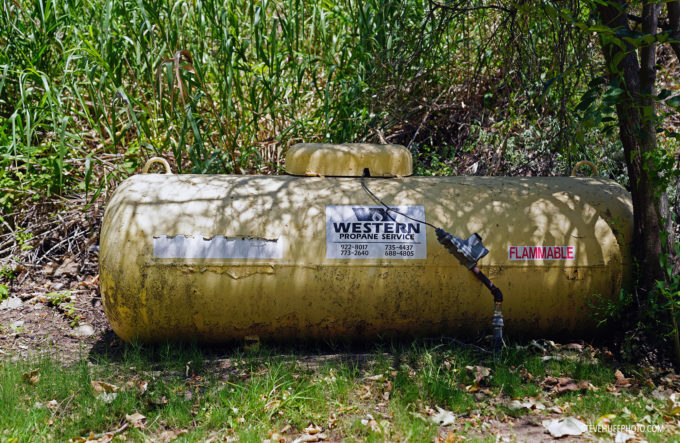
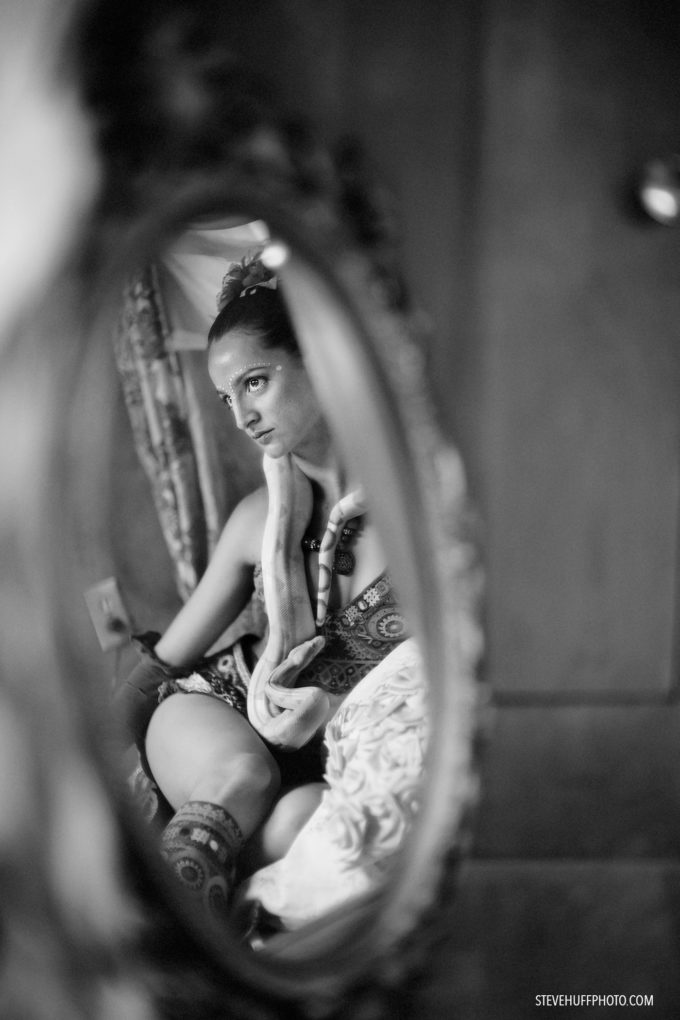
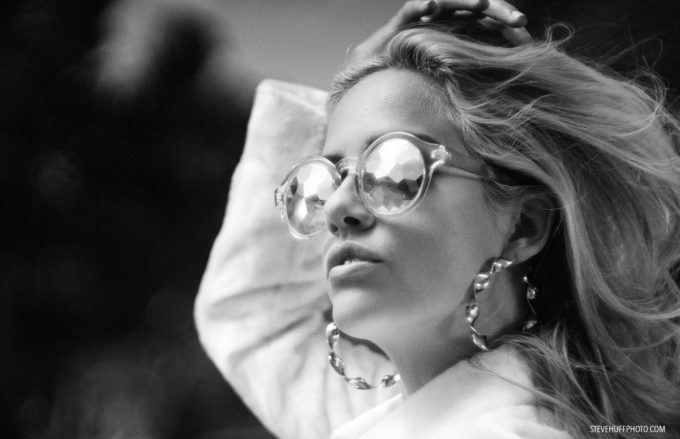

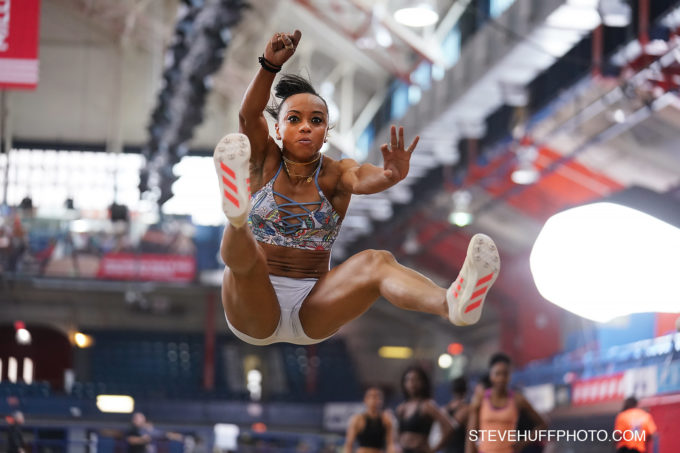
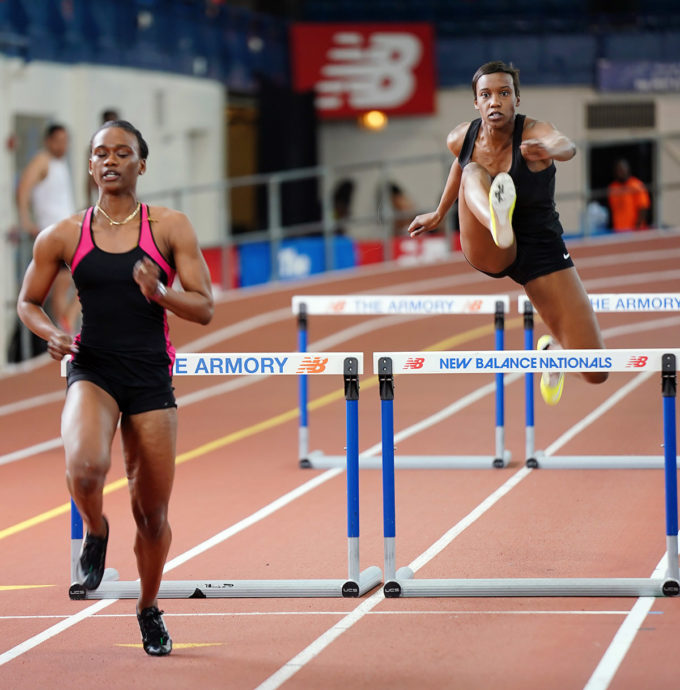
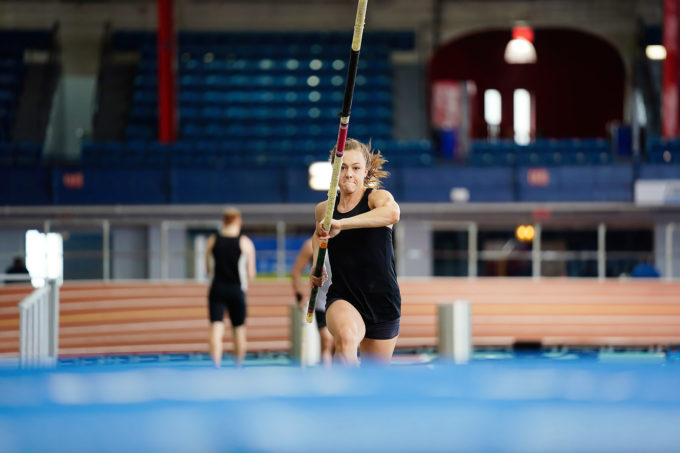
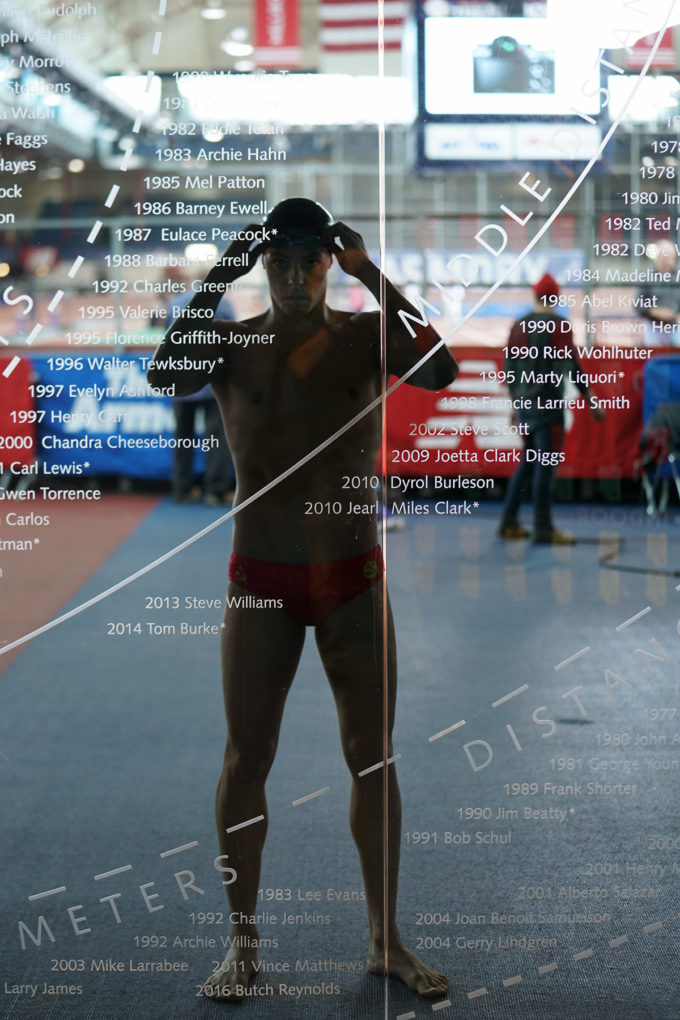
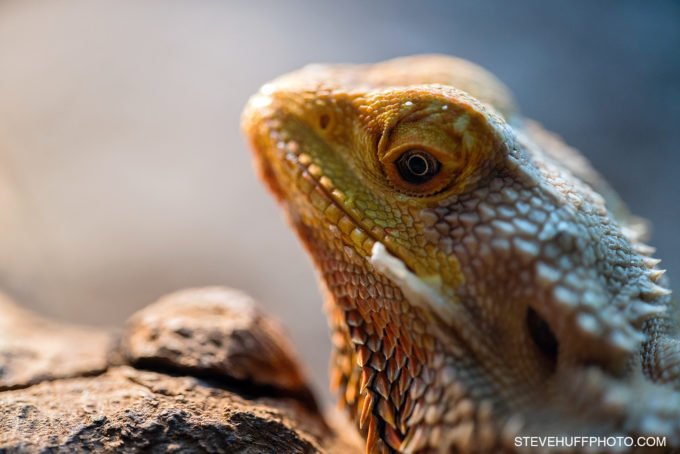
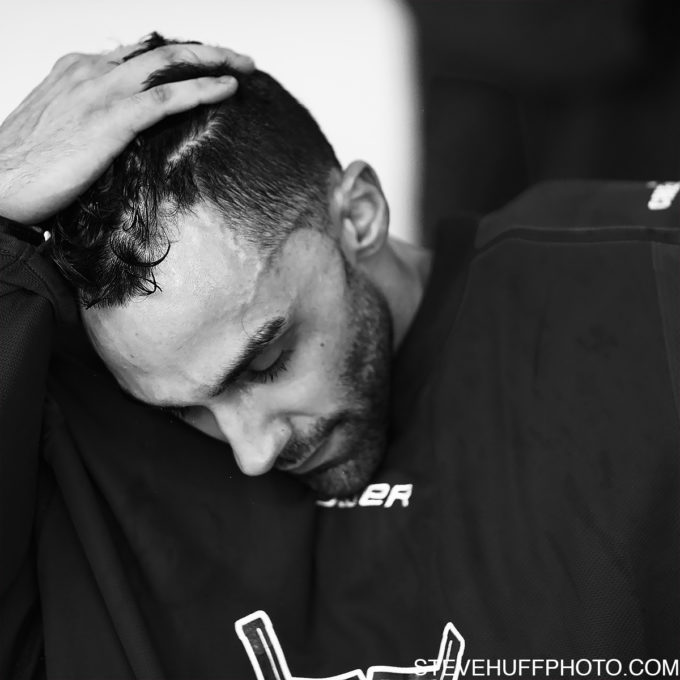
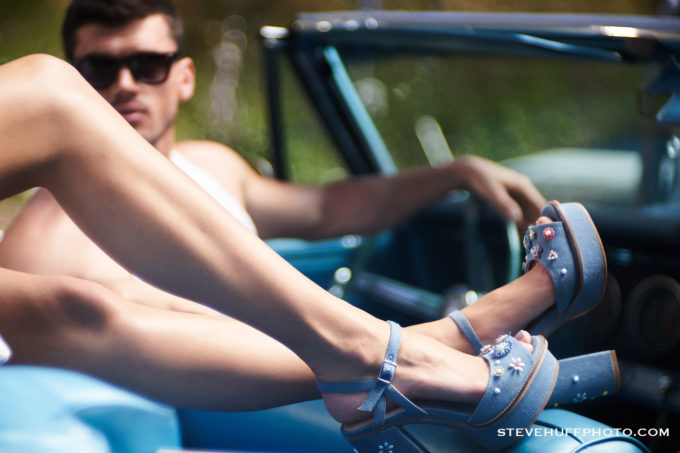
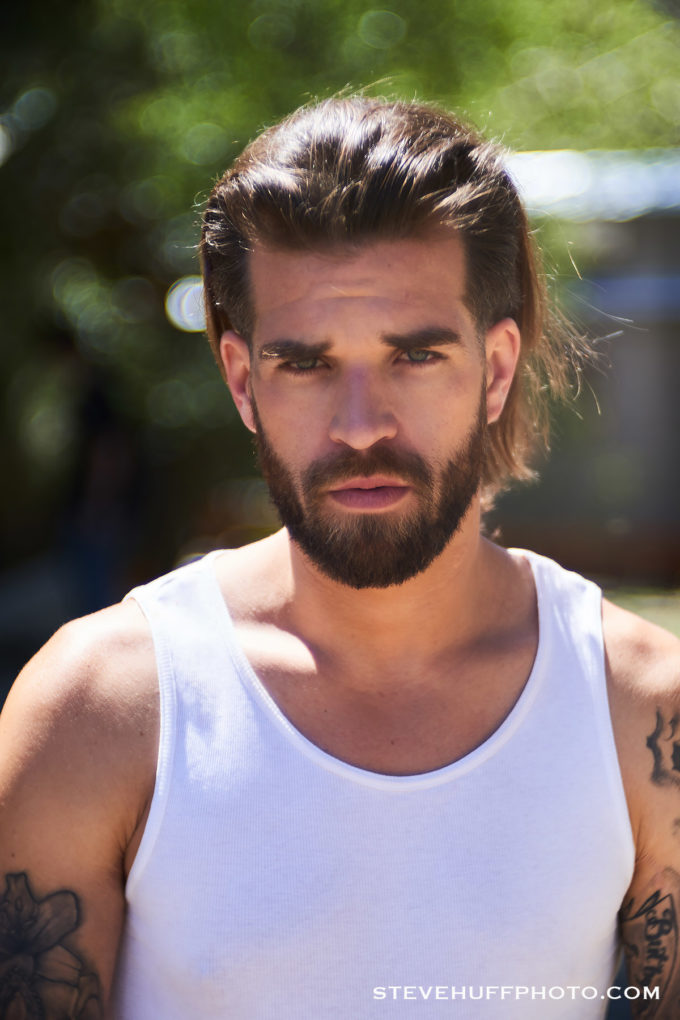
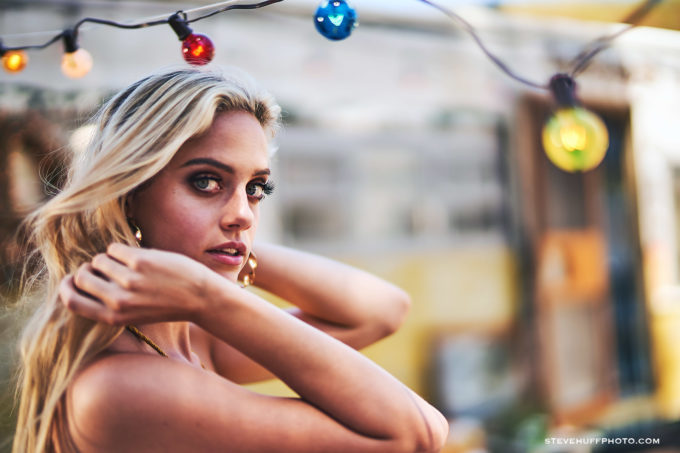
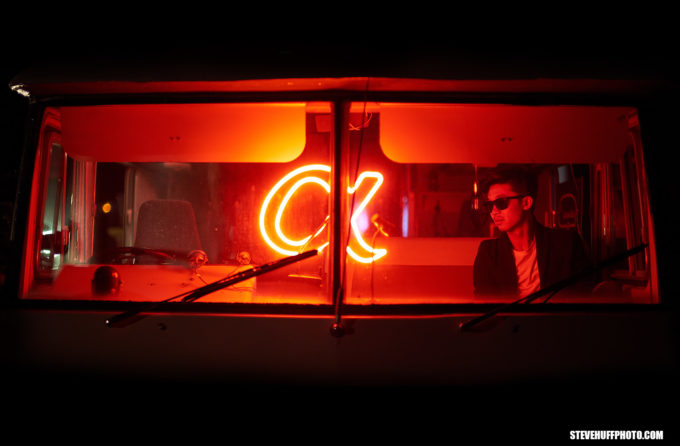
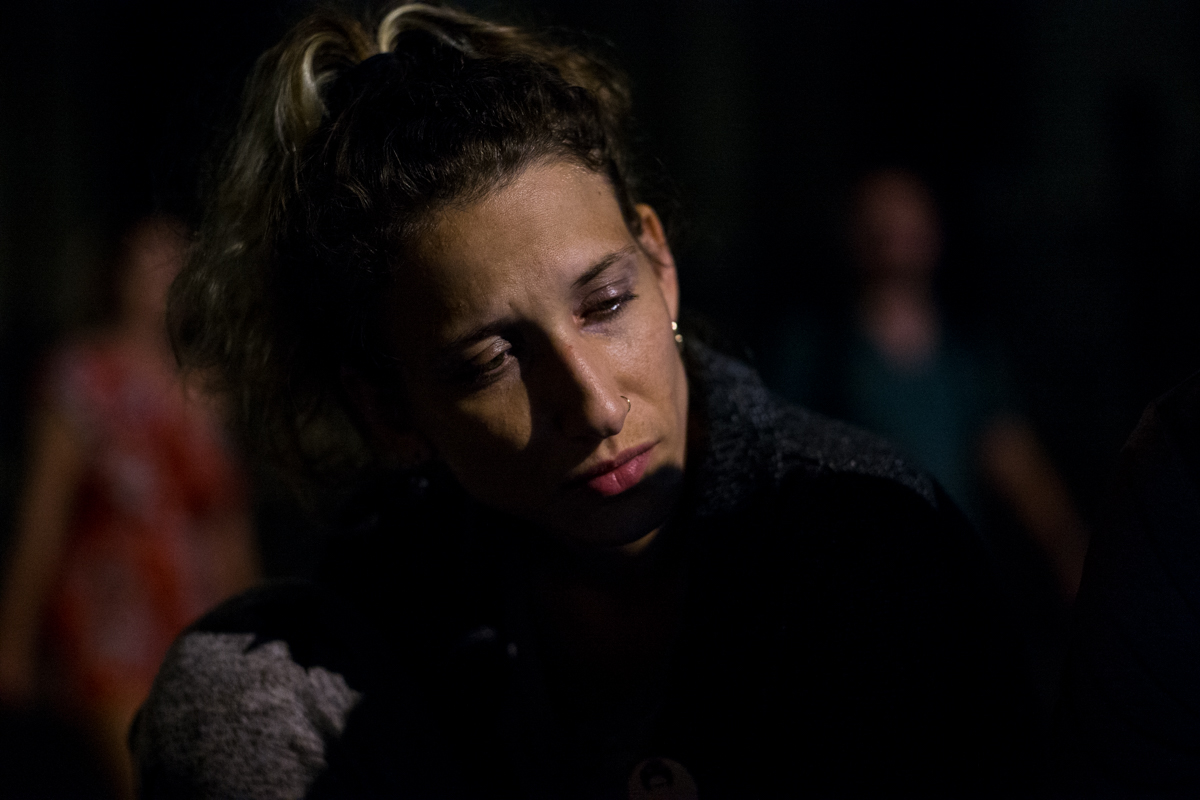
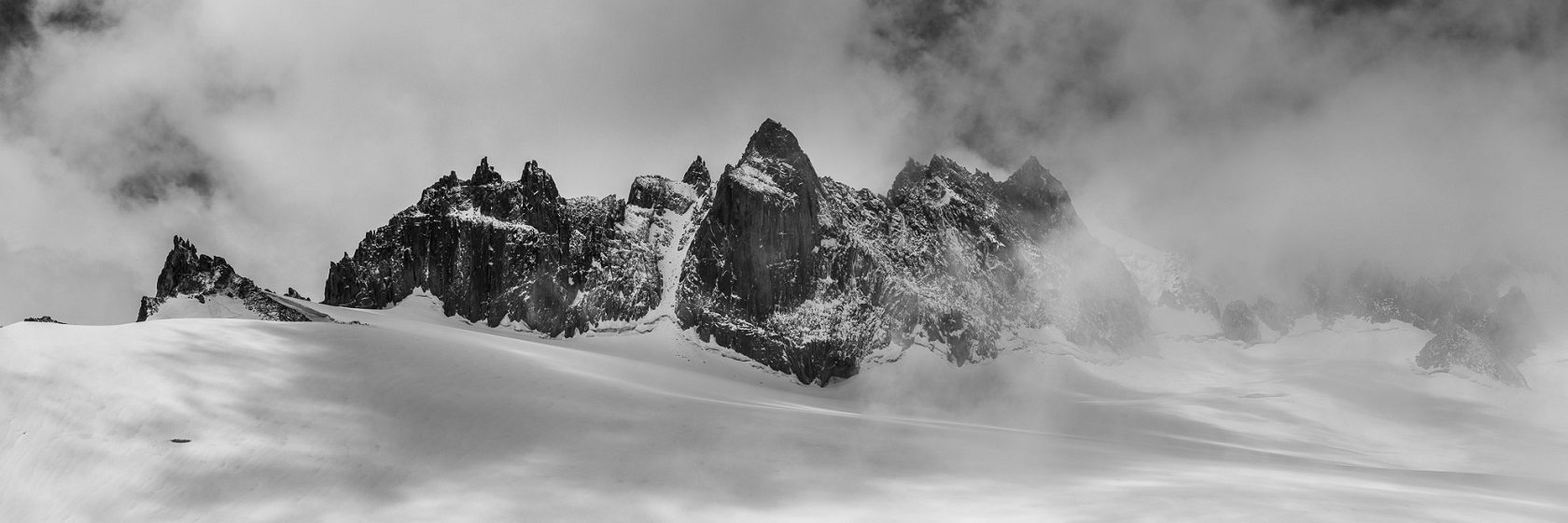
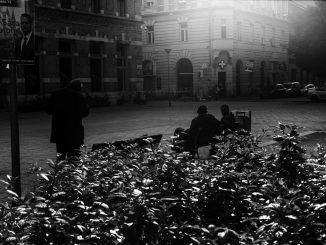
I read today the review and this camera looks really amazing… Unfortunately is out of budget and really too much for my needs.
Do you think that the new low price Sony camera will use some how the same tech? not full frame and with less quality overall but a kind of smaller version of a9?
Well, the a6500 is already one heck of a fast responsive camera. Sony will keep pushing the tech IMO and we will see more and more of the A9 is all cameras they make I think.
For years I’ve been seeking a single camera solution. I shoot sports (my son’s travel soccer, nothing pro), lots of travel, and everyday family/general life. For travel, a decent percentage of my shooting is adventure/hiking, so size is an issue when looking for a single camera system.
I don’t want to build or maintain two camera systems.
My Canon 5D IV is an excellent camera, save one respect: it’s huge. For travel and hiking (especially aggressive hiking at altitude), it’s a bit big. Big enough for me not to want to lug it around all the time.
OTOH, I shoot a good deal of my son’s travel soccer, and it’s good for that.
My Canon gear is limited: the 5D IV body, the 24-70 IS II, and the 100-400 IS II. That’s my whole kit.
I am considering selling the Canon gear for the a9, as it’s the first mirrorless to be able to shoot sports reliably. Then, when it’s trip time, I could slap a smaller prime or an f/4 16-35 on it and have a smaller travel kit, but still full frame.
Am I missing anything? Has anyone else made this move?
Can anyone go into detail on the build quality or weather seal deficiencies? I know it’s not a 1D/D5, it likely has an exposed ribbon cable for the LCD and has an improved card door. What dont I know? FYI I’m on a 1D Mk IV and either going 1DX or A9.
Thanks!
No exposed ribbon cable anywhere on the A9 (is this a thing on ANY camera?), and the card door is nice. It’s no 1ds for weather sealing but it does have slight weather resistance. It’s ok in the rain for a while, not a downpour on the camera but light rain. Ive used one in rain twice now, no issues yet. It’s also been in 121 degree heat, and never overheated even with video. The A9 will be MUCH smaller than a 1DX, lighter and much more fun to shoot IMO. Me, I’d go A9 unless I was a pro who needed extreme toughness. As in, if I would be banging them, dropping them or abusing them (not intentionally of course) Id go 1DX. In all other cases Id go A9. The EVF is such a joy to work with.
Thanks for replying Steve, maybe you can help further. The A7II has an exposed ribbon cable connector under the display. Since I can’t post photos, if you look at Lens Rental’s Roger Cicala’s teardown, it shows the cable clearly in the 4th photo.
Anyhow-my question: when you say the a9 is weather sealed but not pro-weather sealed, what specifically are you referring to? I’d really apprriciate the detail.
Ahhh, I found it but it is hidden well, and not noticeable as a ribbon at 1st glance. Doesn’t worry me at all as Ive used this in the rain, and heat and never gave an issue. I used my A7RII in all kinds of situations and it never faltered over the entire time of ownership. I used that camera like none I eve owned. Held up great. So yea, I see it now but I am not worried about it. If anything happens during my ownership of it I will update.
I’m really happy with the A9’s image quality and performance. This is an early impression as I just got ithe A9 a few days ago and my first outdoor action shoot was today with the 24-70 GM. Wonderful results. One thing that stood out for me was how fast and easy it was to control the focus point within the frame and thus compose even action shots the way I wanted to.
Just ordered an A9 via your Amazon link. I was going to wait for an A9R or be happy with the excellent E-M1 mk2 (my birding camera). However, I realized I have a lot of action shooting coming up soon, thankfully my bank account will be ok, I already have the FE lenses I need, so I decided to order the A9 now for heavy use this summer. Your review and reader comments were pretty positive about the A9 and in the past your opinions on camera and lenses have been consistent with my own experience. I have benefited from your reviews and your site. I look forward to getting an A9 soon.
Thank you and enjoy the A9!I am enjoying mine, lovely camera.
Hi Steve, great review. I appreciate the honest non biased feedback. Do you think the A9 will function okay in areas with high humidity? i.e. Hawaii/Florida/Southeast Asia? You mention the big flaw of not being fully weather sealed. My biggest fear is humidity getting in the body because the weather seal isn’t good enough and the $4,500 camera short circuiting. Thanks!
Well, I used my A7RII in the most humid conditions in Key West for a few days straight, never an issue. I used it in Illinois in the summer with 65% humidity (and the A9) and no issues. These cameras can all handle humidity.
In high (condensing) humidity or very light drizzle, or getting hit by a random drip; the back LCD turns off and the EVF turns on, even though nothing is close to the sensor. Button pressing makes no difference and I have the relevant options set correctly (back LCD is default view and switches to EVF when the eye is put to the viewfinder). Tipping the LCD makes the back display come on again (so the override works). Pushing it back turns it off and switches to EVF – even with nothing close to the back of the camera. But after a couple of minutes of popping the LCD in and out, and rubbing the camera with a sleeve to absorb any moisture, the problem goes away.
I didn’t “test” conditions where the camera maintains this minor moistness, or gets even wetter. Nor will I – not with my A9, anyway…
Obviously it may just be my copy and I plan to send it in under warranty as soon as I can bear to be without it 🙂
Thanks Beats. The only thing that’s been holding me back with getting the camera is the weather sealing. I’ll be visiting very humid areas 50-80% humidity. I’ll have to take Steves word for it.
I do a lot of concert photography and natural light portraits. I’ve been considering the a7SII for awhile now for the high-ISO (I don’t need massive megapixels). The focusing capabilities on the a9 make me wonder if I should be looking there instead. Do you have any advice for extreme low-light and available light photography comparing the a9 and a7SII?
Hi Steve,
Do you believe that A9 will do well in landscape photography?
Thank you!
Of course. I remember when people LOVED some 10MP cameras for landscape. The A9 is gorgeous, and can be used for ANYTHING. If you print 40X60 you may want more res. If you get your kicks from pixel peeping details at 1000%, and that is what you want (believe it or not some just pixel peep) you may want more. If you take photos and view them as they should be viewed, the A9 can do anything you need.
Steve,
I read your a9 review with interest, thinking this camera might be just the ticket for wildlife photography. I do have a concern, though. I bought an a7ii, in part based on your reviews, and enjoyed it for a year and a half. However, since last November it has been plagued by an apparent IBIS problem, that results in a “Camera Error Turn Power Off then On” message, and a camera that is useless. I sent the camera in for repair at the cost of $300 only to have the problem return in April on a five week overseas trip where I was counting on the camera working. This “Camera Error” issue has been reported by other a7ii owners and Sony does not seem to have any permanent fix or other solution for affected owners. (See, for example, https://community.sony.com/t5/Alpha-SLT-DSLR-Cameras/Sony-A7II-quot-Camera-error-turn-power-off-then-on-quot-Known/m-p/634523/highlight/false#M10972.) Do you know whether the same IBIS design is incorporated in the a9? If so, I would not consider buying it. I do not need another expensive paperweight.
No idea but I never had an issue with my RII over two years of use, nor the A7II I owned for a while. In all reality, it most likely is the same 5 Axis system as they never said otherwise. It’s basically Olympus tech, and Only has been using it for years in their bodies. But sorry to hear of your issue. If that happened to me I would also be leary. Thank you.
this is the most in depth and insanely good review of this camera online. So many killer examples and breakdowns of the features. Im totally sold. Well done. I bookedmarked your links and will be sure to use that inbound when I make the big purchase from B&H. Just need to scrap together the coin and make the jump. Coming from shooting Canon5d4 the move is easier justified, buy another M4 [I was looking for a backup cam anyway] or splurge an extra 1K ish for this beast. cause it is a beast. keep up the awesome work brutha!
Thank you. Mine arrived today, and I am thrilled with my decision to sell off the A7RII to get the A9. So much more enjoyable. Speed, response, feel, EVF, battery (I get 4-6X the battery life over. the old system) and well, everything. The AF for video is 2X as fast as well and now useable for my Vlogs as well.
I’m surprised you *swapped* A9 for A7rii and relieved I didn’t have to trade. If that had been my only option, I’d still have an A7rii (only). The A9 is awesome, no mistake, but the extra megapixels (nearly 2x) and extra stop of DR of the A7Rii make it worth keeping as a *complement* to the A9 . Perfect as a pair! The trade-off, switching between bodies, accepting the limitations of each, is doable – but only if you have both. Yes, the r2 feels glacial after using the A9, but ohh, that image quality!!!
I use ‘hi res’ lenses on the A7rii (Otus, Sony 24-70 GM, Batis) and ‘action’ lenses on A9 (70-200 GM, Batis). Carry both bodies with suitable lenses and you’re inviiiiincible 🙂 There’s no photographic scenario you can’t boss, right and proper!
Hi Steve,
Do you mean leica lenses work better on the Sony A9 than on an M9? This is really impressive. How about compared to M240 or the M10? Cheers!
I never said that or hinted at it. I do know that I was happy with the way they performed on the A7SII, A7RII and unless you are shooting landscape with a wide angle Leica M lens, you will not have any issues. Wide angles like an 18 may have soft corners on a Sony with a converted M lens. But shooting 28, 35, 50 and up should give no one any issues. I mean those issues went away with the 2nd gen A7 series for the most part (magenta sides, etc). I have yet to use M glass on the A9 extensively, but will be soon. Thank you.
Sorry Steve, I thought you mean it when you said “THIS A9 is better than a Leica M9 in every way, yes, even for Leica glass.” Can’t wait to see how leica lenses work on the A9. Cheers!
So how does the M glass like 35cron perform on the a9, color smearing?
Hi Steve, I just received my a9 and I find it rattles. I don’t mean the connections for the strap but something inside does. Did you find the same when testing?
Yes the review unit does as did the others I shot with. Something to do wth the 5 Axis IS possibly. But it is normal. My A7RII does this as well, same thing, as I just shook both of them.
While EVF has no blackout, it is only applicable if it is on electronic shutter.
Did you experience any rolling shutter effect when using electronic shutter, particularly when panning/on high shutter speeds/shooting moving subjects?
Sony made this camera to have minimal rolling shutter effects. The situation where you will see this though is very rare. I have not seen it in any video I shot, but I never see it in my A7RII video. For me, if it never shows up in real world shooting, it is not an issue. So many try to find things wrong that will never even show up when using the camera correctly. I use a camera in the right way, daily for at least 2 weeks and report my findings. I found no issues at all when using the camera as it was intended. Now, while I was with others using the A9, someone tried to get that effect, and they did, though it was MINIMAL, and much better than previous models. So it may be there in some situations but again, I never saw it.
Do Leica or RF lenses need to be modified to work properly on a digital camera? I have been told this by a few people. But I don’t see it mentioned on various sites using MF lens on Sony adapters etc.
Would love to use a MF Leica or other lens on the A9
Thanks
No not at all. Just the adapter. They will work good on Sony cameras, E mount not the A mount DLSR. They will work on Micro 4/3 mounts though I feel that would be a waste and they work on APS-C Fuji bodies as well. Just need the adapter. Been shooting Leica on Sony, Olympus and Fuji for years. The best adapter I have found, and the one I use is the Voigtlander Close Focus adapter. Lovely adapter, well made, allows for closer focusing if needed and built to a high standard. That is for M mount lenses. Some older Leica lenses are screw mount, so you need the tiny, thin metal Screw Mount to M adapter, then the M to E mount adapter is going for Sony.
The longer lenses will work better then the wider. Down to about 35mm they will work well, wider then that and they start to have issues on Sony bodies.
I have posed this question to various people and often their response is this.
“I have a lot of 50mm lenses for the RF’s and SLR’s (as in > 100). If you are going to use RF lenses on an A7R2- you should send it in for the sensor modification done by companies such as Kolari. RF lenses are designed for cameras with a short Flange distance- they are close to the sensor. The thick stack used by Sony causes issues, you are not getting the full quality of an RF lens. The other issue: you are paying for some precision machining that goes into an RF lens for the Cam. The Sony does not use it- again extra expense for something not required on the mirrorless camera. The Sonnar is known for focus shift: this is not a problem for a mirrorless camera. You focus through the lens, any focus shift has already been accounted for.”
Is this a valid concept that RF lens MUST have mods?
“..The thick stack used by Sony causes issues..” only, in my experience, with very wide angle lenses. My 21mm and 24mm Leica work fine on my A7RII ..and so do the wide angle Cosina/Voigtländers ..or perhaps I’m just not discriminating enough!
In normal photography you won’t notice any problems. But if you’re shooting flat brick walls – instead of real-world photographs – then you may see fuzzy corners. And if you’re a landscape photographer, shooting at f11 or f16 or f22 to get the corners as sharp as the centre of the picture, then you may see that the corners are not as sharp as the centre, and may look a little stretched or smeared. It just depends on what kind of photos you want to take.
“..RF lenses are designed for cameras with a short Flange distance- they are close to the sensor..” ..but the short flange distance of Leicas is greater than the very short flange distance of the Sony A7 ‘FE’ (and A9) cameras. That’s why an adapter can be fitted between Leica-fit lenses and the Sony bodies.
Hi Khulu,
Have a read of my original reply to Steve down below. I’ve tested a few M and R lenses with the A9 last week and did side by side comparisons with my SL. I’ve looked at all the shots side by side in Lightroom. I don’t want to bore everyone with a long winded explanation but here’s a few short observations.
The Tri-Elmar WATE is soft at the edges especially at f4 but I would argue hardly any more than the SL. There is some vignetting present.
The Cron 35 virtually no difference at f2. Sharp as a tack in the middle very slight smearing in the corners which disappears by f5.6
Nocti, renders very similar to the SL and colours are very close. I did get some CA on black objects at the wider apertures.
Lux 50 is an absolute cracker on this camera, at least as good as the SL
Cron 90 APO. I don’t think there’s a camera you could put this on that it wouldn’t be sharp. The detail captured with the A9 and this lens is magnificent.
R 35-70f4 Fantastic and suits the A9 very well.
R 80-200f4 Again fantastic but a heavy lens to balance on an A9.
With all of the above I would say the colour signature produced on both cameras is pretty close, certainly nothing that couldn’t be given a tweak either way in editing if you weren’t happy.
Now the best bit, I tried all the M’s with the Techart Pro AF adapter and was really impressed, so not only do I get to use my lenses, I can make them AF and IS at the same time 🙂
I would have tried some comparisons against my M Mono but it’s away getting its sensor replaced. Would I buy an A9 over a new M10? I don’t know, that’s a different question. I’m sure lens performance wise it wouldn’t be an issue but as we all know there’s other reasons why people go and buy M’s.
Would I buy the A9 over an SL? Yes and I’m open to offers on my Mint SL now 🙂
Awesome to hear and thank you for the tests and letting us know your results!
Thanks. I will have to read that a few times to figure it out and if true< why is everyone telling me the lens needs to be modified?
geez
Wow AF and IS?
That’s amazing.
thans for all the great info.
I was going to hold back because of the info I got from threads on Serious Compacts. I am glad i asked here.
Much thanks.
Hello again,
I’m not sure what they can be on about, using a mount adapter all of these lenses fit straight on the front of the A9 (or any E-Mount camera) without any modification to the lens or mount. You can either use a straight ‘dumb’ mount which simply provides the correct mechanical conversion. Stick the camera in Aperture Priority and use the aperture ring on the lens as you please, letting the camera take care of shutter speed (and ISO if you have Auto-ISO turned on). Turn on Focus Peaking and then focus manually on the lens. If you have IS turned on then you now have these lenses stabilised too.
Use the Techart Pro mount and you get the same mechanical conversion of the mount, the same ability to set aperture on the lens BUT you now have AF available which, although not as fast as a native AF lens it’s more than acceptable. Using this mount you set the lens to infinity and then press the shutter or AF button and bingo!
What you DON’T get is any 6-bit coding on the lens, any Exif data about the lens or which aperture you’ve set, a price I can live with.
What you can do with the Techart is set it up through an app on your phone whereby you set an f-stop value on the camera which then tells the camera what focal length of lens you have fitted. Bear in mind that the f value in the camera is not controlling the exposure with this adapter, they have simply come up with a clever way to relay an indication of lens type back into the Exif data. For example f2 = 18mm, f2.8 = 24mm, f4 = 35mm and so on. You can configure your own setup on the phone app.
Another handy thing I’ve found is that if you deliberately set the lens off infinity you can close focus on objects much closer than you can hen they are fitted to a Leica.
There was one other lens I forgot to mention. I have a 1950 50mm f2 Collapsible which is tiny and works perfectly on the A9. This is a L39 screw mount lens with a L39 to M-mount adapter which is then goes onto the A9 mount adapter. Sounds complex, it’s not, it’s very neat and ‘just works’.
I ordered the Commlite Nikon F to E-mount AF adapter today as my commercial gear is all Nikon, if this thing works with my 24-70 f2.8, 70-200 f2.8 and 200-400 f4 then, as well as my SL going up for sale, I think my D4S will be too!
Hope this helps.
Update.
Got the Commlite Nikon F to E AF adapter today and initial results are mixed.
My Nikon 24-70 f2.8 bought last year works brilliantly, quick quiet and accurate. It appears to work in single and continuous focus modes and even with Face Detect. This is good as it’s the main lens I hoped to use with the A9.
My 8 year old Nikon 70-200 f2.8 works but it’s slow and sometime doesn’t even try to focus.
Same goes for my similarly aged Nikon 200-400 f4. 🙁
Also tried an old Sigma 16-35 f2.8 I have and it was a total fail.
The adapter arrived with v4 firmware on it which I think is the latest. I’ll do a bit more digging and testing.
Oh dear. I decided to verify once and for all that my A9 had no overheating issues. I’ve had no problem to date with near continuous shooting for long sessions over the past week. But it’s not very hot in the UK, so I took a trip to a tropical butterfly house today.
On entering, the humidity and heat (at least 85f or 29C) causes glasses and lenses to steam up at first. I waited a few minutes for the glass temperature to equalise and then wiped off the fog. Glass stayed clear after that. However, the main screen on the A9 was blank and would only display anything when tilted. I checked the settings which were OK (on auto switch to EVF) but the problem persisted for a couple of minutes. But then it went away and the screens worked fine thereafter. Looks like the proximity sensor on the EVF doesn’t like extreme humidity.
Anyway, I got on with shooting butterflies – but after only 35 minutes of pretty continuous shooting (short bursts, tracking mode on, using grip and fast memory cards) the high temperature indicator came on. Sigh – kinda wish I hadn’t tested it now 🙁
Having said that, I continued shooting at a similar rate for another 2 hours and the camera never shut down. So it’s not a huge deal – I’m still keeping the A9 – but that warning is a worry. I’ll register the “problem” with the dealer so I’m at least “on the list” if a fix or recall does come down the pike later.
Slightly disappointing.
Update: Sony must have heard me 🙂 V1.01 firmware just announced to “address the overheating warning issue”. The download file’s not available yet though.
Hope the warning message issue doesn’t turn into a cameras catching fire issue now. Suspicious that they may have just upped the threshold for triggering the warning. Do wish they’d give more details about fixes.
What are you guys shooting to get an overheat message on the A9? I have yet to see one with video shoots, photo shoots, etc. Just wondering if it is a 20FPS thing or what? I am shooting it in 107 degree Phx AZ and never overheated..yet.
Thanks for the info.
This was the case early on with the first generation. It’s not necessarily true any more.
Steve,
I had pre-ordered the A9. One day before the camera was scheduled to ship (actually, I got the notification from Amex saying my card was being charged just earlier that morning for the A9 by B&H), I went to the Boston Red Sox game at Fenway Park. As chance would have it, I sat in a dugout box, in the first row, right behind the 5 sports photographers in their pit who were photographing the game. It was fascinating observing their workflow. I was thoroughly impressed with how they shot and edited on the spot on their laptops. 4 of them were shooting with the Canon 1DX and the last guy had a D5. All had massive 300 and 400 mm primes they were using. The pro bodies were rugged and very well balanced with the heavy lenses. The cameras looked like they had been used in a war zone (dirty, muddied, taped up here and there) but looked built like tanks and well suited for the job. Observing that and reflecting a bit, I cancelled my A9 order. Despite all the high tech of the A9, does Sony really like a small body like this will stand up to the rigors of shooting pro sports day in and out? I don’t disagree that the A9 would make a great general purpose camera. But even while it has the specs to shoot sports, I don’t think the build will withstand the real rigors of shooting sports. I wished the A9 was built with a DSLR sized body, if it was meant for sports shooting.
As for fashion photography, which is what I shoot, I wouldn’t use an A9. Generally speaking, fashion photographers demand more resolution so we’re usually talking D810 up to Phase One. Personally, I shoot fashion with the D810 and Hasselblad X1D.
Hien
Steve, as always – thanks for another great review! I have followed your site for years, and love your real world reviews. And by the way, the images you shot for this review are brilliant.
Because I shoot predominately landscape, and some architectural work – the A9 isn’t a camera on my radar. In fact the Sony a7R2 will be the last full frame camera I own. Not my last camera, but last full frame.
I will soon replace my a7R2 with the new medium format Fujifilm GFX 50S – which brings me to my point. If Sony is building medium-format sensors for the likes of Phase One, Hasselblad, and I believe Pentax … why are they late to their own party with a Sony medium format body?
I’ve read rumors that Sony has one on the way, have you heard anything?
Thanks Glen. As for a Sony Medium Format, I assumed they would have done it already but not so sure they are looking to go that route. The truth is, not many get sold. The Fuji and Hasselblad are not huge sellers, and Sony may not go that route. Now, I have no inside info but have brought this up to many at Sony, and if my face reading skills are correct, it appeared to me it was something they may not be sure about or want to pursue. But who knows. Maybe they will. I do feel an A9R will be coming, later this year.
Just bought a new travel camera. The OMD EM1 m2 with the 12-100/f4, based on your enthousiatic Iceland experience (weathersealed). Would you sell it for additional funding to buy the A9 and 24-240 (non weathersealed lens)?
No, I would not. I own the EM1 MKII and the 7-14 Pro, 25 1.2, 8mm Fisheye, 300mm pro, and want that 12-100 to round it out. I would not sell my Oly gear for the Sony as I would regret it later. I’d rather sell my A7rII.
I’m not Steve, but the Olympus 12-100 (equivalent to 24-200 “full frame”) is a far sharper and more ‘biting’ and contrasty lens than the Sony 24-240 (..which gives a good zoom range, but really is not a spectacular – more of a ‘capable’ or ‘slightly disappointing’ – lens). And, of course, the aperture of the 24-240 drops down to f6.3 at the telephoto end ..that’s about one and a half stops less light transmission than the Olympus, needing a faster shutter speed to prevent blur and shake, even with the A9’s stabilisation, and so needing a higher ISO, and thus – in dull light, anyway – ‘grainier’ or less sharp images.
The EM1MkII and 12-100 is a better combination all round: smaller camera and lenses, less weight, better stabilisation, similar mechanical/electronic shutter choice, incredibly fast focusing, built-in jpeg “shaping” (highlight & shadow pre-shooting compensation and adjustment). Don’t swap the lightweight and versatile EM1MkII and 12-100 ‘travel camera’ for the heavier, bulkier, less crisp-and-clear A9 and its 24-240 millstone. You’d really regret it.
Hi Steve,
Lovely words and photographs on the A9. If all the “first batch” issues of banding/overheat/blabla are smoothen out, this definitely looks to be the coming of age body of Sony as a photography system.
I really wished you could provide more side by sides on colors. I saw the high iso comparison on your camcorder and it really feels like the new processor improves the colorcasts with better rolloffs. I suppose I’ll have to do side by sides on my own. But thanks for pointing it out!
From the time the first A7 rolled off the line in late 2013, it took Sony almost two years and four models to get the A7 series right with the introduction of the A7RII, albeit at nearly double the price. One cannot help but wonder if it will again take three more A9 iterations and two more years to get the A9 series right, with an A9RII at nearly nine grand? Let’s hope not…
Nice review Steve.
Would you consider selling your SL to fund the purchase of the A9? That is the real test! 😉
But I am serious… I am considering this very question myself. As I had said before here, the SL is expensive enough and large enough to often get left at home.
Well, I love the SL. The build, the design…I see it as a work of art in that way and I love how everything is implemented (controls). The A9 is kind of the opposite of that, with a boring design and not as nice of a build or feel. BUT, the A9 is smaller, lighter, feels great as it is, and will do better in most situations like low light, better for street, and overall a technologically superior camera. If you go by usability and iQ and versatility, I think the Sony wins easily. If we go by quality of build, it has to go SL. Also, color differences are there as well and the SL offers a nice warm color where the A9 is a tad cooler.
Steve, as always I find your review very inspiring. I’ve never been disappointed with your recommendations, thank you for that. I wonder how this camera compares to the SL in IQ, autofocus speed, low light etc. Do you plan to post a comparison? Thanks again, Kfir.
I can tell you. The A9 slaughters almost any camera for AF speed and accuracy, which is more important. NEVER ONE fail in AF with my A9. For video or photo. The Sl is also nice but no where as fast (though still works perfectly fine, as there is only so much speed one needs). IQ, the SL has a different warmer color signature, which I love. The A9 is a little cooler, so I give IQ to the SL. Low light, the Sony wins easily. Ive shot the SL in low light clubs and it got very noisy when the lights went down and ISO up. The A9 can handle ISO 12,800 VERY nicely, and even farther than that. To me, it’s almost as good as the A7S series in low light (in real use, not labs which I see as useless testing). The SL s built better, feels nicer and more premium. The A9 looks boring, has no style but function is amazing. Most versatile camera I have ever used, and I love it though I feel the price is a tad steep. The SL now at $5995 is fantastic and priced right for what it is. It’s a gorgeous camera.
Hello,
I’m sure. It’s a great camera. But it is like a F1 without wheels. The Sony system is unmature for sports.
Sony needs more lenses like 600 F4 and 400 f2.8. Whithout a full lenses lineup is not very usefull for sports and wildlife photographers.
Sony has the 500 f4 and the 300 f2.8, but the price is arround 3000€ over the 500 f4 canon version, and 1000 € over the 300 2,8 of canon.
So, imho, Sony hasn’t got a good system for sports or wildlife photographers despite this amazing camera.
I’m sure, Sony will launch new lenses and we wil conider to invest in it seriusly.
Best regards
(Sorry for my poor english)
New lenses are on the way, but this is just as much a wedding, portrait, street, fashion and everyday camera as a sports camera. It is a “do anything you need” camera. So if you are only shooting pro sports, wait it out. if you shoot sports and everything else, nothing out there beats this for what it is, and costs.
Can you use Leica M lenses with an adaptor on the A9?
Of course I used an M mount lens or two in this review ; )
Hi Steve,
Another enthusiastic and honest review. In one respect I don’t envy your job, trying to appear balanced and non-partisan on one side and then being blown away by stuff on the other. Of course in another way I’m very envious of your job!
Anyway, to my point. I jumped in and bought the A9 last week (if you think $4500 is bad try £4500 which is what it is here, $5760 at today’s rates!).
My conclusions?
1. My main reason for bailing out of the A7 range, battery life, has gone, this is FAR more efficient it seems.
2. I only own 2 Sony lenses, the 28mm f2 and the 24-240 but I rarely intend to use them on this camera. I’m lucky enough to have built up a great arsenal of M & R Leica glass and I’ve done side by side comparisons of the following lenses with the A9 and my SL (I’ll try and post them somewhere). Tri-Elmar 16-21mm, 35mm Summicron, 50 Summilux, 50 Noctilux, 90mm Summicron APO, 35-70mm f4 R and 80-200 R.
Results? Fantastic in every lens, the only issue I’ve seen is (sadly) with the Nocti which showed some pretty obvious chromatic aboration (I need to try this one again). What’s more with the Techart Pro mount I have I’m getting full AF on all of these lenses! In Peak mode they also allow for fast focus and the EVF is on a par to my eyes with the SL’s. Colour signature is slightly different in some cases but corner sharpness is either the same or even better in some case than the SL. Detail is easily on a par. There’s some vignetting present on a couple of the lenses but nothing drastic (I’m pretty sure the SL is removing this from the jpeg in camera as it is able to apply the correct lens profile. I deliberately did the tests using ooc jpegs – I wouldn’t normally use jpeg)
3. I nearly forgot, I get 5-axis image stabilisation on all of the above!
4. My SL is now For Sale – seriously, this camera can do everything my SL can do and more if I want it.
Thanks
Jim
I’m pretty sure the A9 is just the first of this new generation, like the A7II was a few years ago. I think I need not to be too impatient and wait for other types in the A9 Series that will suit me better. Or maybe (I even suspect) the A7 series will stay in the catalog and will further evolve. Probably the A7RIII could/would be the one for me and save me a lot of cash for features that are not important for me.
Going over all arguments, there’s no reason for me to pay 3500€ or more for an upgrade. These are your arguments.
Blazing Speed: doesn’t count for me, since I only use MF lenses.
Improved Image Quality and Color: starting from RAW, I do not experience any deficiency wit my Rii files. Of course everything can be improved. But not for 3500€. And I would give in on my cropping power.
Huge Dynamic Range, Amazing in Low Light and High ISO: same as above.
HDTV like EVF: this is something I’m looking forward to. Still the Rii has a really good EVF – that can be improved, indeed.
NO Blackout in the EVF when using the Electronic SILENT shutter: I don’t need this for my work.
Dual SD slots: OK, but I’m not really worried.
New longer life battery system: OK, but I really don’t mind the A7 batterry, that BTW makes the camera lighter in the hand.
Improved grip/feel and controls: OK, but I like the Rii feel a lot. I don’t miss anything in that regard.
The most advanced auto focus: which I don’t use.
My conclusion: I expect that Sony will make a more perfect camera for my use, that (I hope) will spare me quite some cash, since I don’t need many of the present A9 hi-tech features.
I felt the same way Dirk. $4,500 is too much, I thought. Then I got one…Oh boy – is it ever worth it. Holding it for the first time, you immediately realize, with this model, Sony has FINALLY shed the consumer haptics. It feels like a true Pro camera, especially with the new grip extension which is a brilliantly implemented and a well-built little add-on, with tight tolerances. The joy-stick is well placed and responsive. The control wheel feels substantial, not fiddly like the A7’s, as do the front and rear dials. The quick release latch on the card door is a massive improvement over the previous “press to snap in” versions, which always felt cheap and consumer-ish to me. I cannot over state how disappointed you are going to be looking through the EVF of your A7RII after shooting with the A9’s…it’s that good. Honestly, my only reservation, before getting one, was whether or not I would be satisfied with the A9’s image quality. The answer is a resounding YES! We all have our own “test shot” scenarios for testing our new cameras, as every good gear-head does. I ran the A9 through all of mine and it performed magnificently…IQ DOES NOT disappoint. As for the A9’s claim to fame, well the auto focus is military grade, lighting fast and acquires tone-lock instantaneously…it tracks like a RPG. To say the AF performs as advertised is an understatement, but it is not why I bought the A9. Having been on the Sony mirrorless journey since the NEX days, for me the A9 represents the culmination and maturation I’ve been patiently waiting for, since I purchased the A7 in 2013. It’s about damn time Sony…
Steve how often do you have the need for 29 fps? Nice camera. Even great camera but for travel and general shooting a lot of overkill. Why pay for options that you’ll never use, I’d rater get a camera that will work for 80% of my work then rent something for that other 20%.
I rarely use that as I said in this review but for all other reasons, it is an incredible machine. For street with its blazing standard AF, for fashion with its nice colors and again, focusing capabilities, for portraits 24 MP is perfect, for anything with its nice large clear no blackout EVF, it’s wonderful battery life, its dual SD. I used an SL for everyday photos, I used an M system for every day photos, I used a $5k Only system for every day photos. This at $4500 is much less than my Leica every day photo setup, yet allows me to shoot in any light, in any scenario and any subject matter without causing me an issue, missing the AF or running out of battery. NO more laggy EVF’s either. So for me, if I can swing it, will be well worth it as I use my daily drivers every single day. Thank you.
Nice review and nice camera but way too expensive – at least for me.
Speed 29fps, who needs this really to get great pics!?
Raw quality isn’t improved over a7ii at low ISO from my first impression albeit I don’t dare to conclude anything after only half an hour of shooting. Funnily enough all raw files still have the same size thus Sony still precook them.
AF – fast but still some misses with the testet 70-200/4.0.
LCD – sub par regarding the price and very reflective compared to anything I´ve tested recently.
EVF – nice but the wow effect didn’t happen.
The biggest con perhaps only for me – the camera is too small! If you want to use any of the GM lenses or even the smaller 70-200/4.0 I tested, you can’t hold the camera comfortably, placed on a tripod OK but never free hand with large lenses. I am really curious how and if the target clients sports shooters will handle their heavy Tele lenses on the A9.
I understand that there are many people out there looking for the fastest camera and I hope for Sony that many are willing to pay this high price but I seriously doubt.
Thanks for the review Steve, been waiting to see how this one played out! Still shooting on my Q (for now) but really leaning towards the A9 to put in the mix.
Was suprised to not see this as a video review, thought for sure this would be your big transition after the website evolution. You still planning on moving towards more video reviews? Thanks again for time and effort put in on the review!
I did 2-3 videos with my thoughts on the A9. I already said all I really could say besides show the menu, and controls, but there are 100 other videos out there already showing that ; ) Also, I only had this for a short time. Sony. used to allow 4-8 weeks for reviews, now it is 2, and I was traveling half of this time. So did not have as much time with it as I would have liked. I will do a video and follow up when I get my own A9.
I think it is the result of the cumulative effect of many improvements, not just speed, that has made the E-M1 mk2 so enjoyable. It may be the same with the A9 which I’m seriously considering (while keeping my A7R2). We often look to a single feature to justify a purchase when really it’s the whole A9 package that counts. Your review and reader experiences with the A9 are appreciated.
Thank you, and yes, it is the package as a whole for me. nice response and AF Speed, better battery, EVF, better feel, better controls, dual SD, never miss AF, nicer out of camera files, amazing low light abilities, ability to use 3rd party glass via adapters (Leica, Canon, Nikon, Vintage RF, Screw Mount, etc).
Dear Sir, very nice review if only I could get rid of that big fat brown address bar on top of the site, sorry to say but it’s back again……….it stays put and covers almost halve the size of my screen, so if you would be so kind?
Best regards, John
There is no big brown address bar on the top of the screen, in fact, the ad that was there has been removed. On my iPad, iPhone, sassing galaxy S2 and my iMac, Mac Pro and MacBook there is no big brown bar wether I use Safari, Chrome or Firefox. if you mean the menu bar, it is tiny. I would suggest upping your resolution of your device or display as it sounds like you may have it set very low which will make everything look huge
Did Sony folks have any info/reason for not weather sealing? Agree. That should be included for $4500.
Any hint of ring flash for Sony system? Use it for my clinical photos. Would be worth transitioning the A7Rii to the clinic.
Best to you, Steve.
Carl
I so want one! It’s the point when Sony’s mirrorless strategy becomes mature. Of course a camera should have an EVF, it should see what you’re shooting to focus on it, and it should control exposure by silent electronic means. That’s the first camera that actually does all these things. It’s the turning point when mirrorless is no longer an early-adopter technology, but the norm.
But $4500… how am I going to justify that? I don’t shoot for a living. My A7RII works perfectly, and I still have a couple of pricey lenses to buy to complete my set. The RII lets me down occasionally: Missing AF in low light, kind of slow, its electronic shutter is not so good. Don’t know. Maybe I’ll find an excuse.
I shoot single shots, not a stream of rapid-fire continuous shots. And using the A9 – compared with the A7RII and A7S – in electronic-shutter (silent) mode – as I always do – there’s just not enough feedback from that “always-on” non-blackout viewfinder to show, or confirm, that I’ve actually taken a shot (..if I turn off the annoying focus-confirm beep, which I always do).
So it’s a fast camera, but it doesn’t show anything in the finder (..no “blink”..) to confirm that I’ve got my shot. So it’s not for me.
And ISO 16000 doesn’t look as clean and usable – to me, anyway – as 16000 on the A7S.
I can see that it’s a pro’s ‘action camera’, for fast follow-focus and multiple frames per second. And it’s a good deal lighter than the ‘pro’ Canons and Nikons (..though it still uses BIG autofocus lenses, unlike the micro4/3 cameras).
But for single silent shooting – as I do – I’m not tempted to swap from the previous versions to this one.
(You say, Steve, “..While my A7rII has a more serious megapixel count, at times it is overkill.” Yes, but it does allow for plenty of cropping afterwards, if necessary: throw away half the picture, and you’ve still got 20 megapixels left!)
I can see that it’s great for sports photographers – you’ve proved it with your own pics! – but I’m still happy with my A7RII, a few Sony lenses, and a Techart auto-focus adaptor for using teeny Leica lenses with the A7 series. The A9, though, does eat the massive Leica SL for breakfast, I think!
The no blackout EVF does indeed tell you when a shot was taken, which was gone over in a video I did. You see a translucent box that flashes when the shot is taken. So while you have no blackout you do get verification of the shot being taken. So you are incorrect there ; )
You can also set it to blink (blackout) the EVF on the first shot. This will be the only shot in single shot mode of course.
Thanks, Beats. Yes, I see that in the manual, but hadn’t set Menu2 > Shoot.Start Disp. > On, so hadn’t had the single blackout effect. Great that Sony did include that facility in the Menu ..makes a big difference – for me.
OK, thanks for the clarification, Steve: I didn’t notice the “translucent box”, but only the focus-confirmation box. Incidentally, the A7RII gives a very slight inaudible “thump” when it’s shot (in silent mode) ..like the sensor stabilisation switching off immediately after the shot’s taken.That’s a bit of tactile feedback that the shot has indeed been made. I found that little bit of feedback missing from the A9, so it also lessened the sensation that I’d actually taken a shot ..I found myself taking extra shots just to be sure that I’d actually shot a photo!
lots of hatred here ! why ? again, thank you Steve for this extensive review !!! you rock
We have over the years, and continue to for different work, shot every camera system there is, extensively. From Leica to Nikon to hasselblad and phase one. You name it. And this is hands down the best all around camera we have ever operated. By a mile. It really is just that good. Even the feeling of the buttons are different/improved. Camera operation is so much more snappy. The evf is ridiculous and especially so once you zoom in with manual focus lenses.
As a Sony Artisan and one of the few lucky ones, like Steve, who have had the pleasure to shoot the new A9 I can confirm everything he said in this review. It truly is Sony’s first ‘all grown up’ camera. It’s astounding really. I’ve never shot such a capable camera. And as a long time user and huge fan of the A7rii and Rx I can also say the new A9 will become our go to for 35mm. The color signature is unique and yes the nicest Sony colors I’ve experienced. And the in hand experience of the a9 is just unreal. A true pro camera. I’m yet to find a flaw myself honestly. And I’m quite critical of cameras. No look so whether you’re a Sony shooter or not go to your local store and play with a a9…you’ll see!
Thanks Steve! I have read and respected your real word reviews from a shooters perspective for years. And also thank you for shutting down the trolls in the comments. Your website is one of the few where the saying ” never read the comments” doesn’t apply,
Very enthusiatic review Steve and great to read. Thanks!!!
NICE ADVERTISING FOR SONY 😉
(I m kiding you,… but not so far 😉 )
I’m interested in finding out what, “Don’t pull a Rockwell on me now…”, means.
..It means “Don’t review it without having used it..” as Ken Rockwell will often review – or ‘predict’ – how a new camera will perform without necessarily having used it, but just going by the camera company’s specifications.
IQ A9 vs SL? 🙂
Thanks! Could you show a “straight portrait” in indoor light, both from the A9 and A7Rii, and upload full size raw samples or OOC jpg? ISO 3200 included would be great 🙂
How well do you think the A9 is protected from rain?
So purely on the two 24mp sensors, which do you choose, Steve? A9 or L M10?
Hi Steve!
Great review and comparison to the other Sony cameras in line.
By the way, as you “struggle” with the $ 4500 price tag, Sony wants to have 5300€ here in Europe! That’s about a grand more, strangely.
best regards,
Michael S.
I tried an A9 at a store and liked everything about it except the price and the fact that I don’t want or need to shoot 20fps. Do you think there might eventually be an “A8” with the same sensor, controls and EVF, but not the blazing speed, around the $3000 price point you mentioned?
Steve – thank you for another great, comprehensive review. As a current A7m2 user, I have been looking to upgrade. While I have looked at the a7r2 as the most appropriate next camera, it seems the A9 might be the one. One thing that initially gave me pause (other than the orice difference) was the fact that I do not take action shots or otherwise rely heavily on speed. Based on what I have see and your great review, I believe I will take the pleasure plunge. Thanks again.
“…the most advanced auto focus I have ever come across…”
The first image posted? from a manual focus Voigtlander! 🙂
I agree with Abe. I purchased an A9 and did tests vs my A7RII with a Batis 18mm. At 50 ISO the RII was much better than the A9. Maybe because of the 42 megapixel. At 6400 ISO, the RII also showed less noise than the A9. However, I did like the feel of the A9 – faster buffer, less mushy buttons and dials, but not a huge leap above my needs. I shoot architectural interiors and do not need the speed so I packed up the A9 and sent it back. Gonna keep the 7RII and save myself $4500 until something comes out that beats the 7RII. I do wish Sony would come out with an articulating LCD.
Steve, the comment should be about the review, but I have to congratulate you for the beautiful sequence of photos, and for the artwork that is the photo of the exit and the photo of the corridor, both in ISO 51200.
I thoroughly enjoyed this whole review but this bit in particular struck a chord…
“When you have fun using your camera you also are more motivated to use it. You become a person who WANTS to get out and shoot.”
Amen to that! I was (am) still in that state thanks to my A7rii’s, and I’m keeping ’em for their higher resolution. But I got an A9 last Saturday and have only stopped shooting to sleep. In a way, the A9 almost becomes invisible as it just gets on and does the job you expect it to do. It’s just you and the scene. Nirvana.
Awesome! Glad to hear you are enjoying it!
The a7R II has much better Image Quality. 1 stop better dynamic range, better color performance at low ISO, and almost twice the resolution. The a9 has issues with overheating, and many people (no, it’s not just one person) found it has some severe issues at ISO 100. The sensor gives its most optimal results at ISO 640
And do you have a link to your use and review of the camera? I suspect not, so your words here mean nothing to me. I own the RII and have extensively shot the A9. Have you? There are always some armchair critics out there who have no experience with said camera yet they feel they can review it. Don’t pull a Rockwell on me now…
My review is factual, from real use and stands as it. DR is a non issue with the 7 or 9. Moot issue. I have not seen ANY BANDING, and I tried to see it, recreate it and nothing. It’s simply not in the A9 I have, so could be an isolated issue. If I bought it and it had banding I would return it, or exchange it.
IQ, colors and overall vibe from this sensor beats the 7R sensor, for me. More pleasing IQ. Also beats the RII in low light.
So when you have a review of both the 7RII and the 9 printed, published and show your real world use from it, I will listen to what you have to say, as stating these things as facts when you have not used the camera is a no no around here ; )
Thank you.
Steve nice real world review as always..Sony listens to their customers and I am happy they have improved their out of the box color profile on the A9..it would be nice if they released a firmware update to the A7rII and improve that camera’s color as well..this tendency to improved things only with a new camera should change..Sony should learn from Fujifilm and update their older cameras too..
When the A7rii came out, people were raving about the color profile, as I recall. Does it really need improvement?
When Digilloyd, DpReview, and many other reviews I’ve read on sonyalpharumors.com state the same issues, that’s a valid reason for concern.
And that additional stop in Dynamic Range is the only reason I would upgrade from the a6500 to a Full Frame sensor, as I find it to be actually limiting in many case where I wish I had a little more room to push the shadows or highlights in Lightroom.
Sounds like this isn’t the camera for you if you are looking at an extra stop of DR as being the “only reason to upgrade” from an APS-C sensor.
Personally, I don’t pay any heed to DigiLoyd as he seems to consistently find some obscure issue that either is not duplicated by others or has no impact to my real world shooting. Getting a camera in hand and viewing the files in your workflow is the only way to really understand its capabilities. That’s what Steve has done, the real question is do you believe him? I do.
Abe, I would suggest you try the a9 yourself before pulling out your laundry list of talking points from every negative report you’ve read on the web. I also have shot the camera over a few days and own the a7RII for comparison. My personal a9 arrives this week and I will wait until I have more time behind the viewfinder to express full opinions, but based on the 2,000 or so frames I have sitting on my computer, Steve’s review may be spot on.
Resolution difference aside, I seriously doubt anyone is going to look at an image from either camera and emphatically state that one has “much better image quality”. That’s ridiculous.
Like the a7RII was when it was released, the a9 is a “shot across the bow” camera. It isn’t for everyone but if I were the competition I would be real worried. When Sony eventuallly sticks some of the a9’s core improvements (AF system, new battery and fast buffer) in a lower priced model, we are all in for a treat.
I’m not taking about overall look of JPEGs, I’m talking about the flexibility of the RAW files. The a9 has, in fact, a better JPEG engine. But for someone who likes shooting Landscape, Urban, or street at ISO 100 and then edit exposure, DR, color, and recompose, sometimes with heavy crop factor- the a7rII gives much better results. I would surely want the better EVF and the bigger battery of the a9, as well as overall faster operation, but the sensor is not on par with what you can do with an a7rII.
Chad- shouldn’t you mention that you are a Sony Global Imaging Embassador when you leave comments like this?
Doesn’t matter he speaks the truth. I am not a Sony Artisan and I agree with him 100%. We have both shot the A9 extensively, Chad even more than me. It is what it is, and those who try to skew facts to fit their own agenda or message without even using the A9, well, to me that is silly.
There is no conspiracy here, the A9 is a fantastic camera. Nothing else exists like it in 35mm full frame at this size or price point. If so, show me as I must have missed it.
The A9 rocks, and we should celebrate it. I know I am. It means, as Chad says, that future models from Sony that are less expensive will now use this tech. A win win for everyone.
It’s something Chad should mention without question. It doesn’t mean his views are invalid, but to not state it is disingenuous at best. Seems to me most Sony enthusiasts would be better off waiting for the high resolution/slower version that must be coming soon.
No worries Steve but thank you. And to David, I get your concern but I have been coming here and contributing to Steve Huff.com for 6 or 7 years now, and perhaps incorrectly assume the readers are familiar with my background.
The a9 might not be the camera for you but it doesn’t mean the accolades it is receiving are unwarranted. I can’t wait to get mine this week.
Abe, you’re massively oversimplifying a rather complex issue. For a start, the a9 received DPReview’s gold award and they scored it 89%. In addition, the a9 has a sensor mark score of 92 on dxo, better than both the 1dx mark 2 and the d5.
It is not true that the camera has “severe issues” at iso 100, or that it gives “optimal results” at iso 640. Furthermore, the “issue” with lower isos is read-out noise, something all action oriented cameras suffer from and a necessary consequence of the laws of physics in order to achieve their extreme frame rates. In fact, according to the very DPReview experiments you reference, the a9 performs up to a stop better than the d5 in this respect, arguably the best action oriented camera in the world (until now, perhaps), and on-par with the 1dX mark II. It also provides more resolution than both.
The finding of the DPReview test was that above a certain (ridiculously high) limit you’re better off using a higher iso in the camera than UNDEREXPOSING at base ISO then artificially pushing the shadows in post. That “certain limit” I mentioned was up to a 3ev push in the shadows. Up to that point, the pattern noise visible in the a9 images was not noticeable compared to the 7RII. Furthermore, this effect disappears above iso 640.
Now, the camera’s dynamic range is already such that you are highly unlikely, even in bright sunlight, to capture a scene which is simultaneously well exposed for some of your subject and underexposed by greater than 3 stops for other parts of your subject. Consequently, if you’re pushing 3 stops in post, it’s likely because the shot was badly underexposed to begin with.
As a predominantly available light wedding photographer, which involves dealing with a range of highly challenging lighting scenarios, I can tell you that in many years of using a D4, and a D3s before that, I have rarely (I can think of one such example off the top of my head where i had to spin round to get a shot which was highly backlit and had no time to change metering modes) shot an image which requires such drastic recovery.
You characterised yourself as a landscape/architecture shooter. I can foresee very few scenarios where you would need to push 3 stops in the shadows with those subjects. Moreover, those that DO encounter such scenarios in real-world shooting, are likely to be shooting in bad light at high iso anyway (certainly above 640), so this issue will not affect them.
My honest belief is that this is really a non-issue for the vast majority of shooters. You don’t need even 12 bits of dynamic range to capture a landscape or architecture shot which is well exposed across the frame, so losing a stop in good light to the a7RII is, imo, a storm in a teacup. People were making money shooting world-class landscapes when raw formats were 10 bits or less 😛 And if you’re so concerned about dynamic range, there is always bracketing and exposure fusion.
If you’re looking to buy a new camera, and your only interest is large, distant, static subjects like buildings or landscapes, then by all means, buy an a7RII – it’s a tremendous camera with IQ second to none. But if you do need an a9, i think you can buy one safe in the knowledge that should you want to, you can take truly stunning landscapes which the vast majority will struggle to distinguish from the a7RII. Assuming you’re not printing bill-board sized! Or, if I can put it more succinctly: the A9 is a much better landscape/architecture camera than the a7RII is a peak action camera.